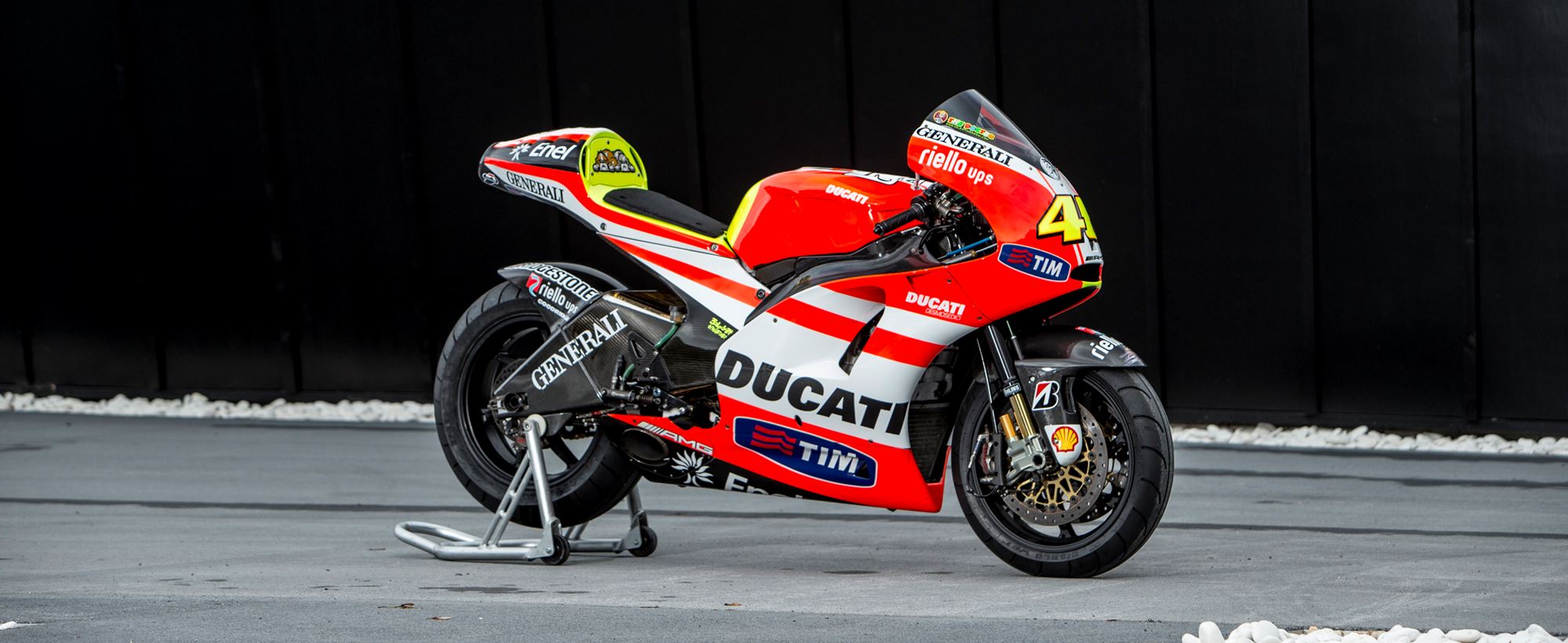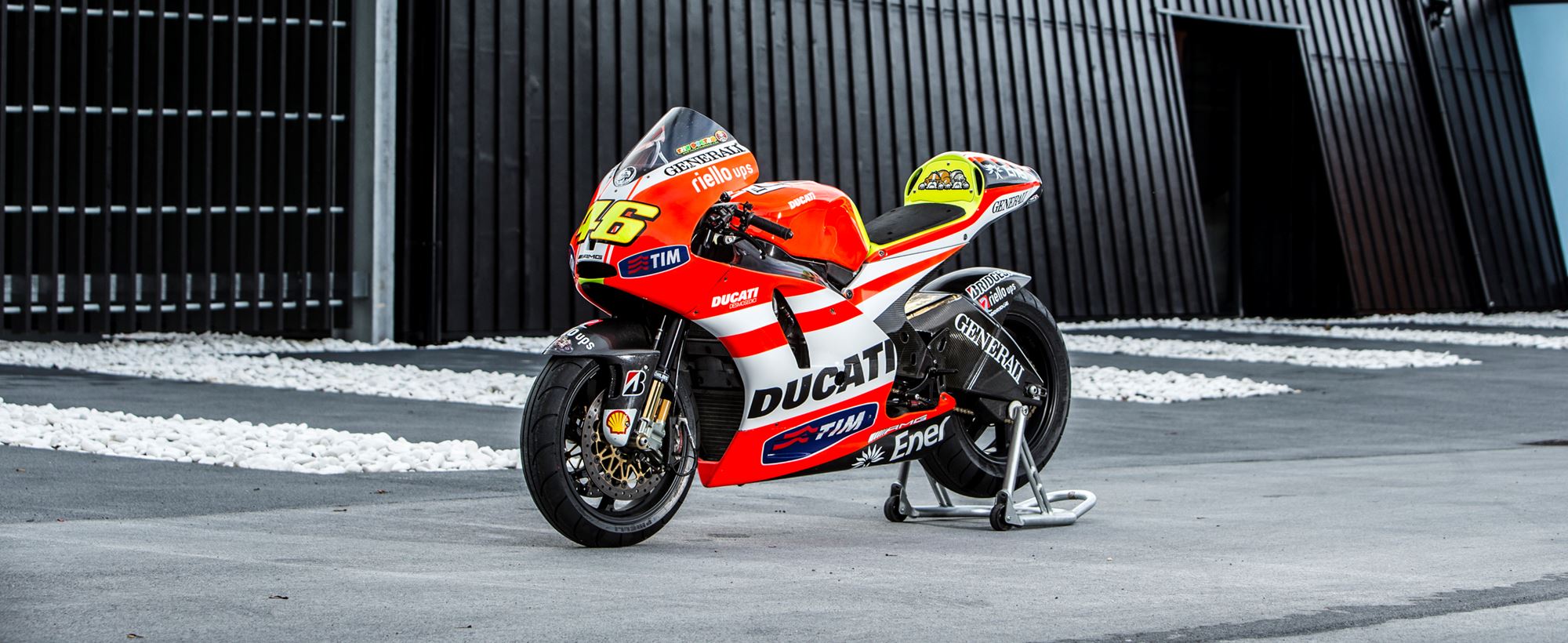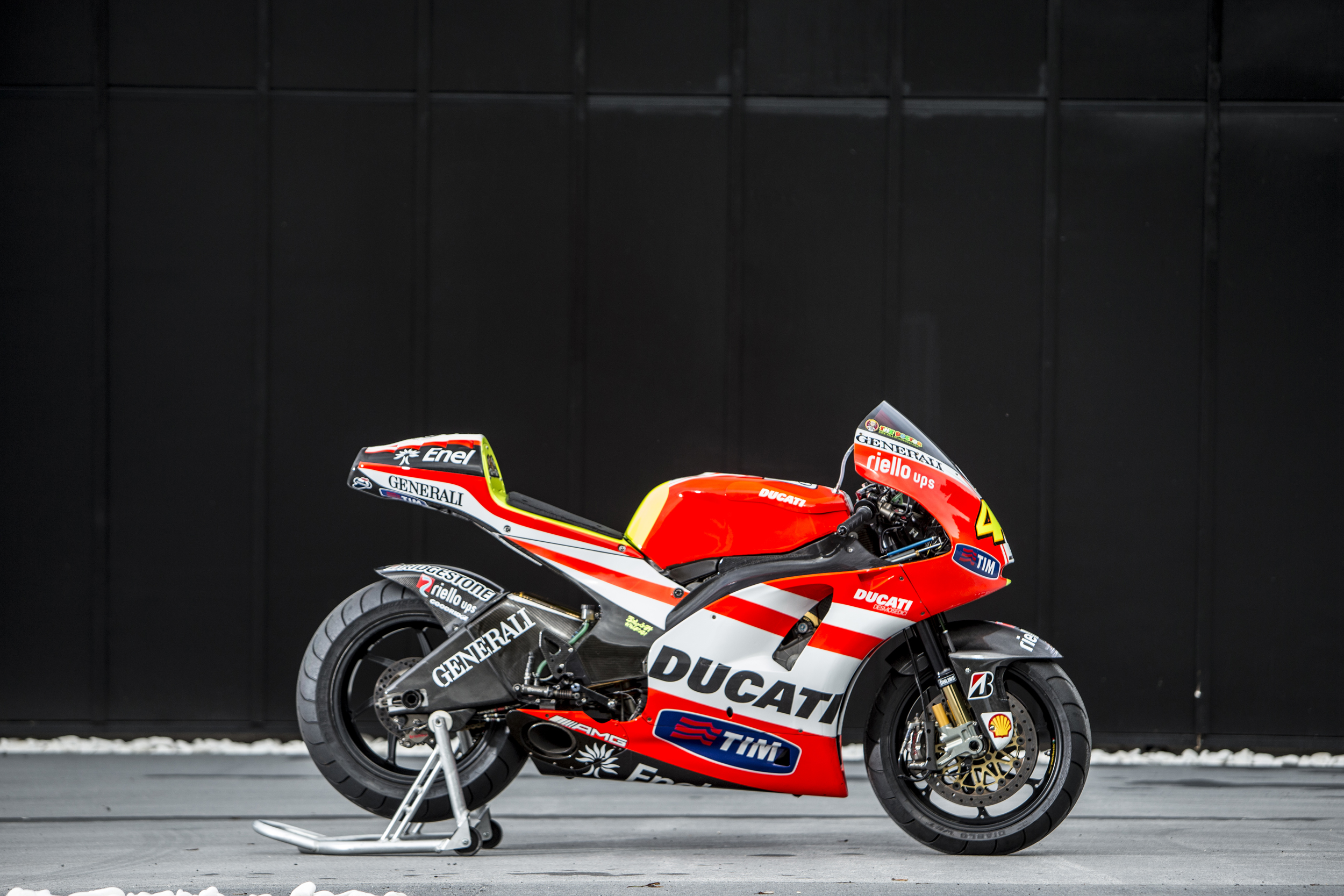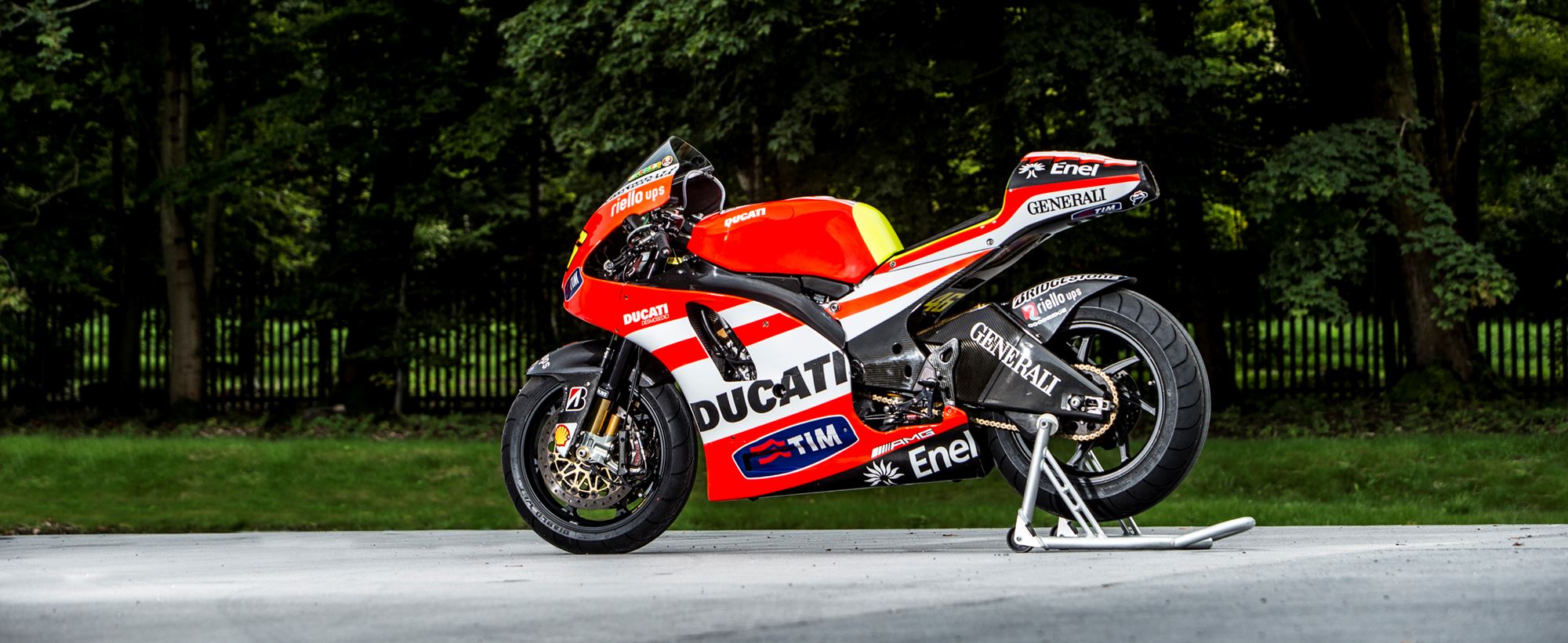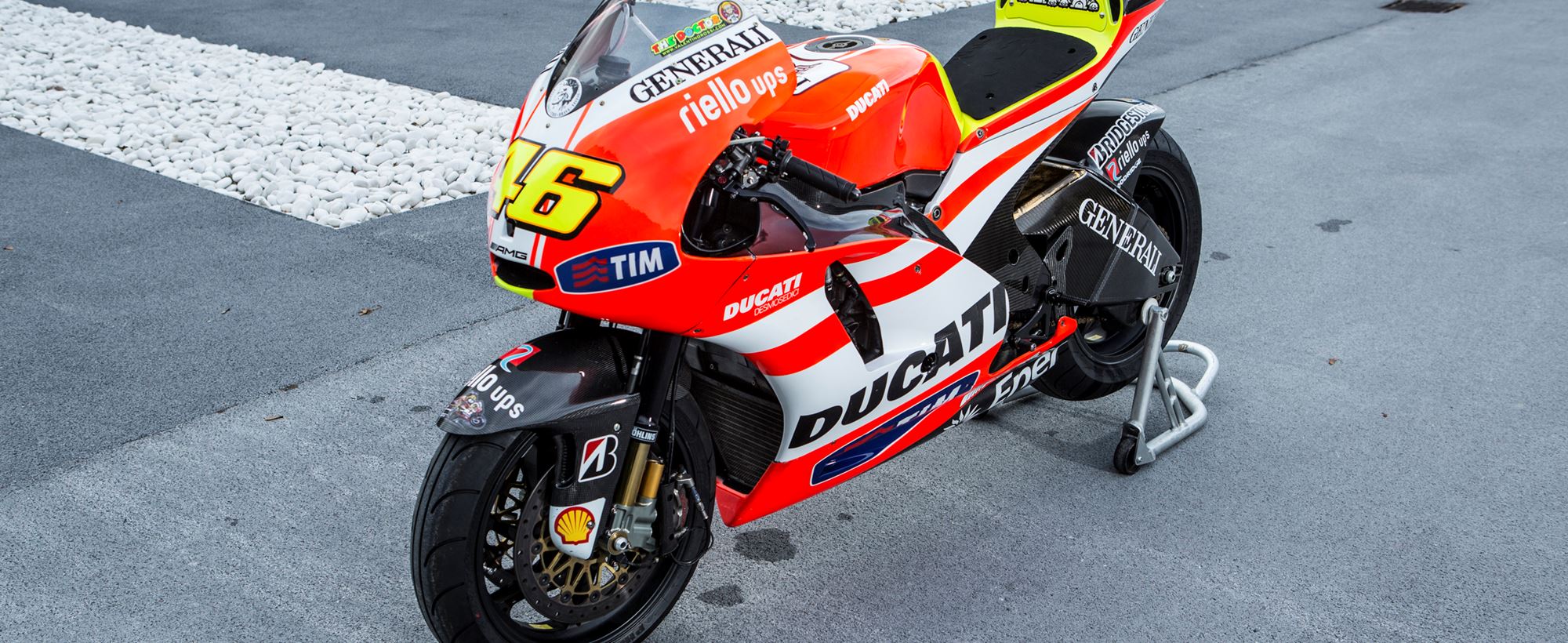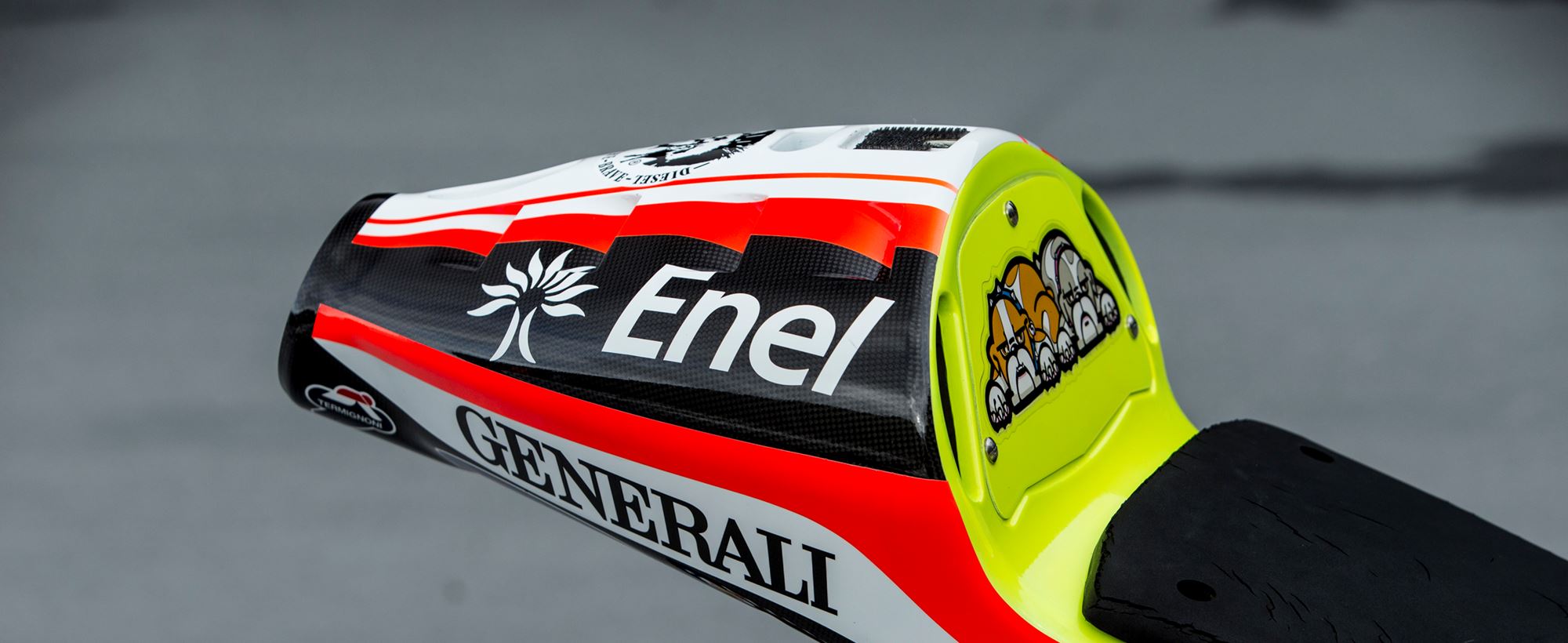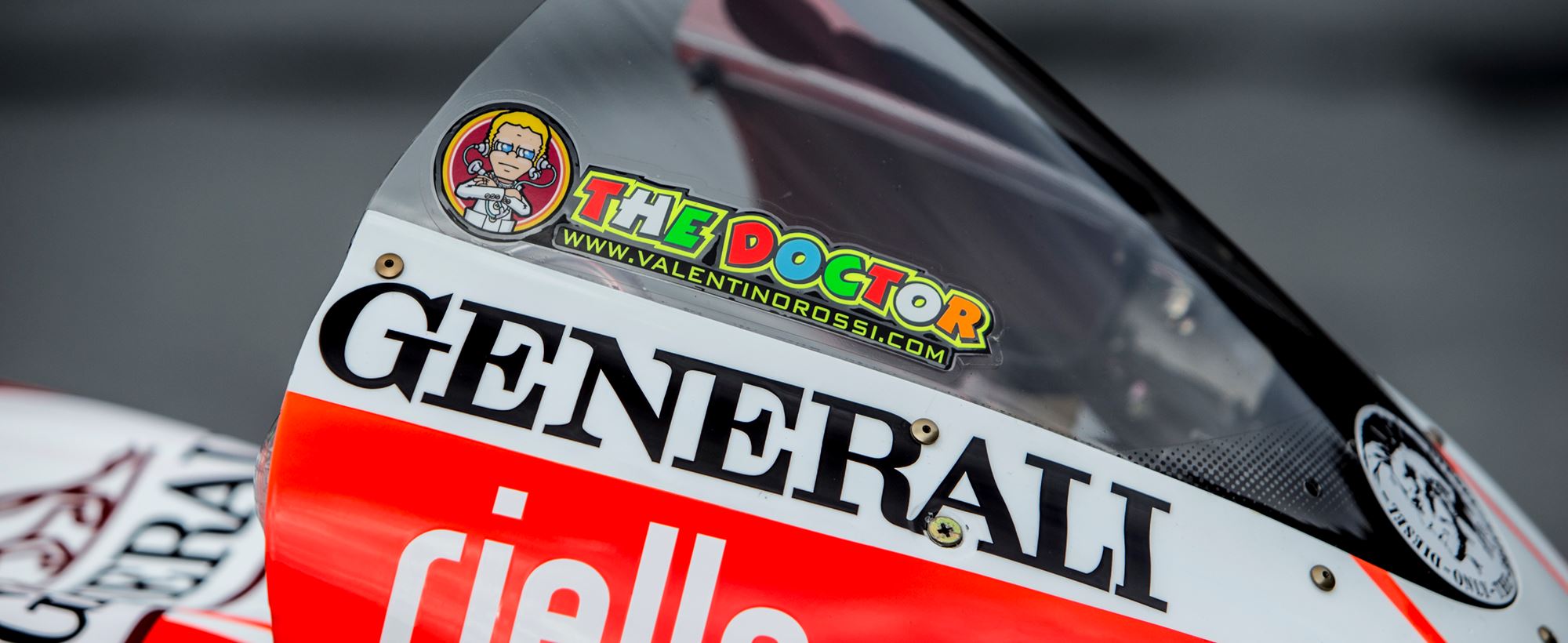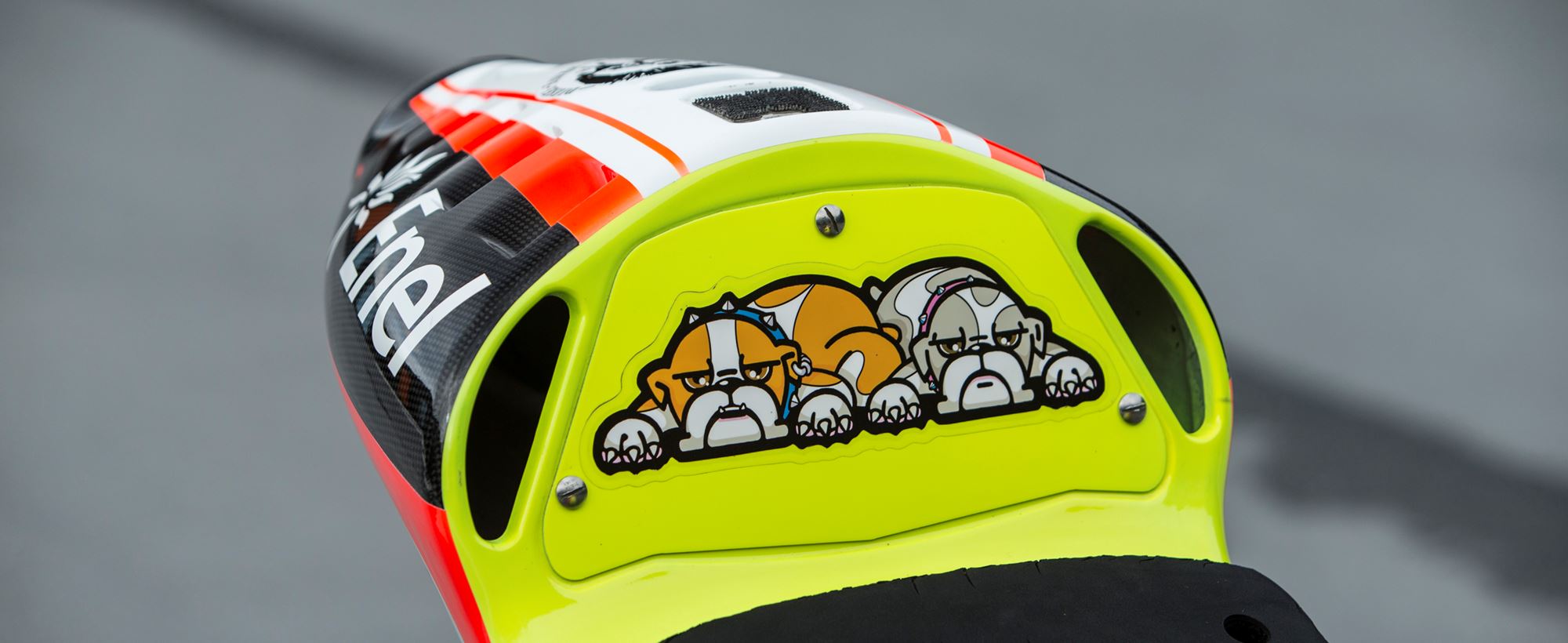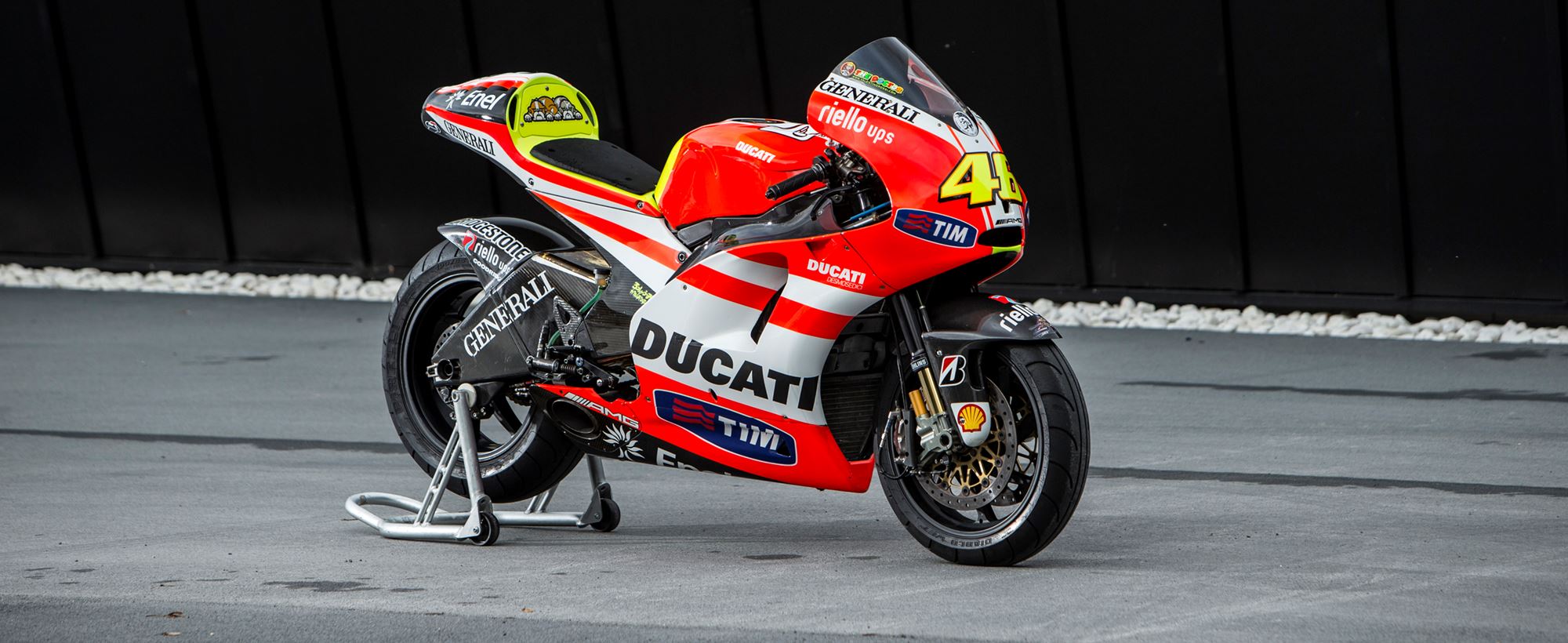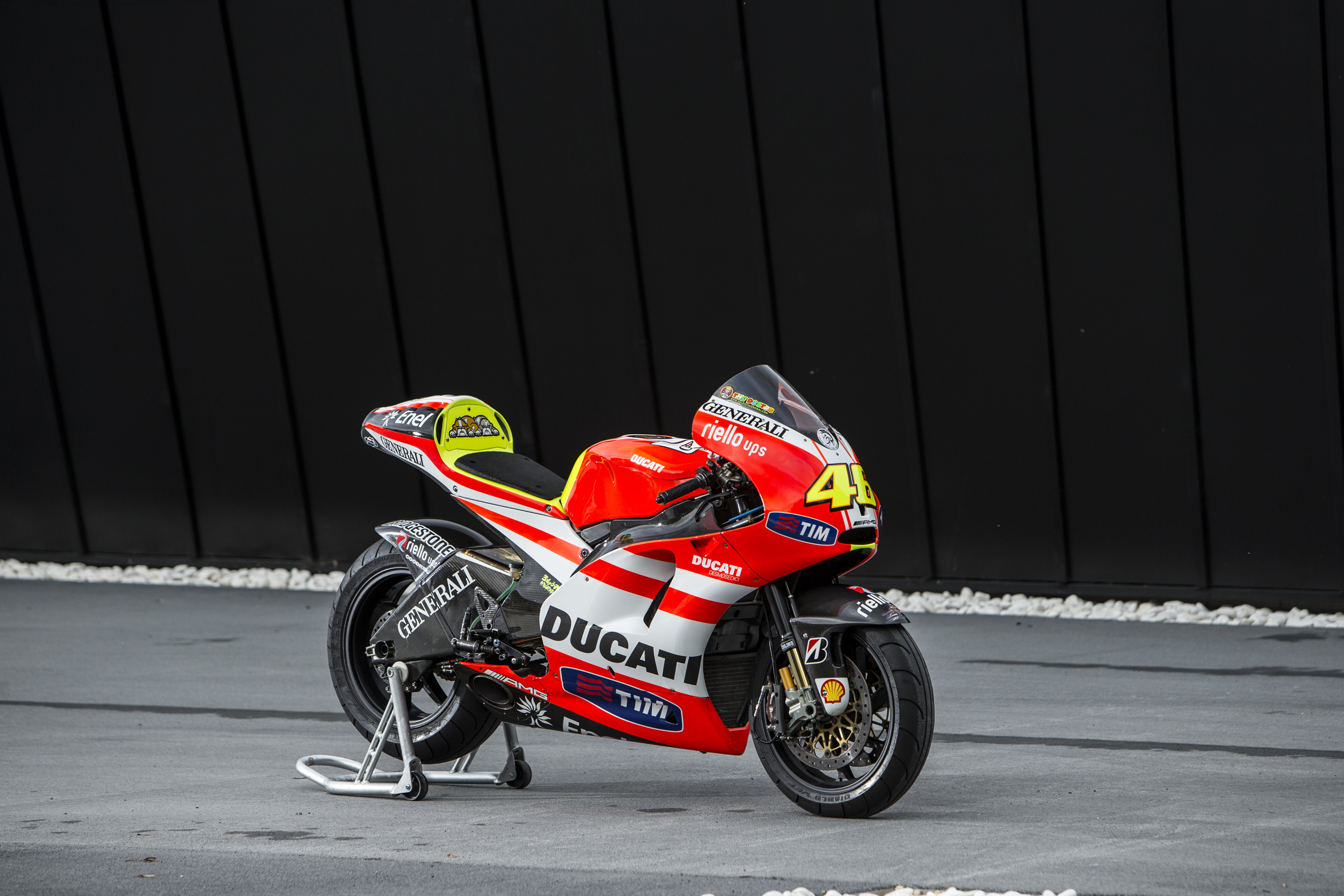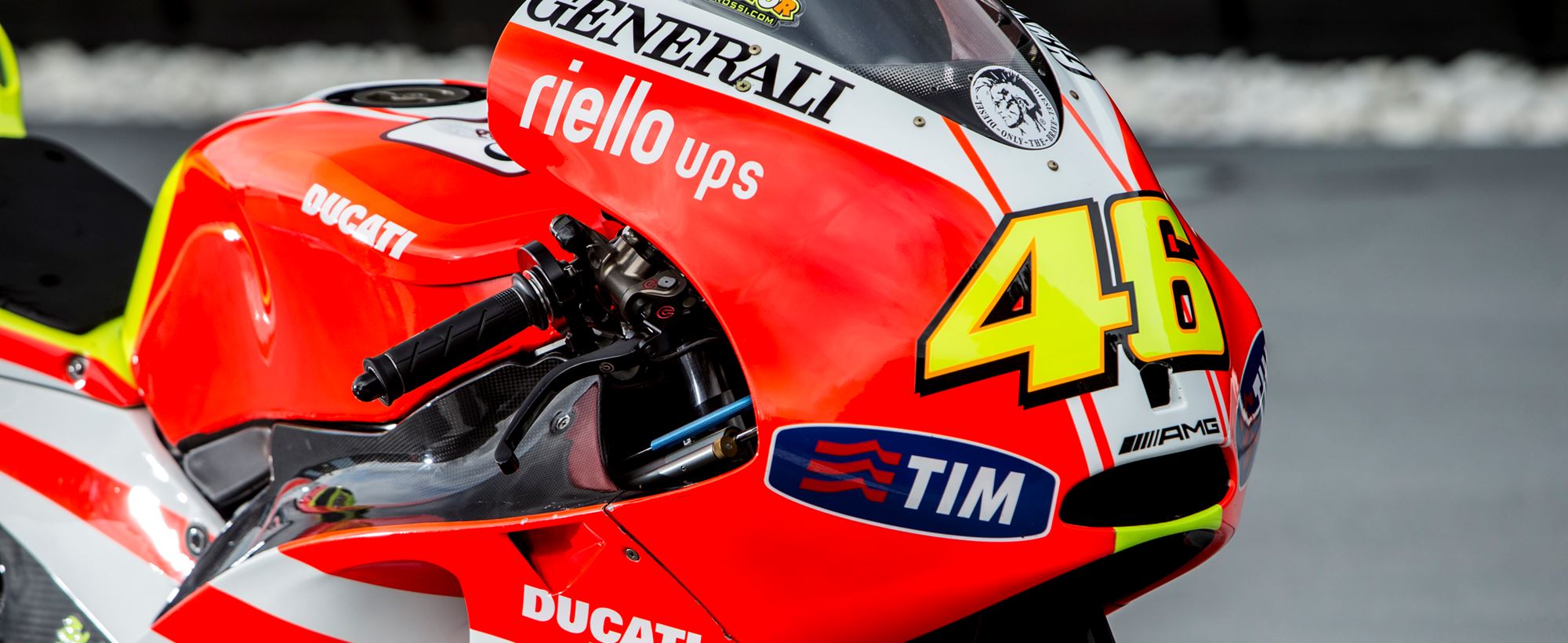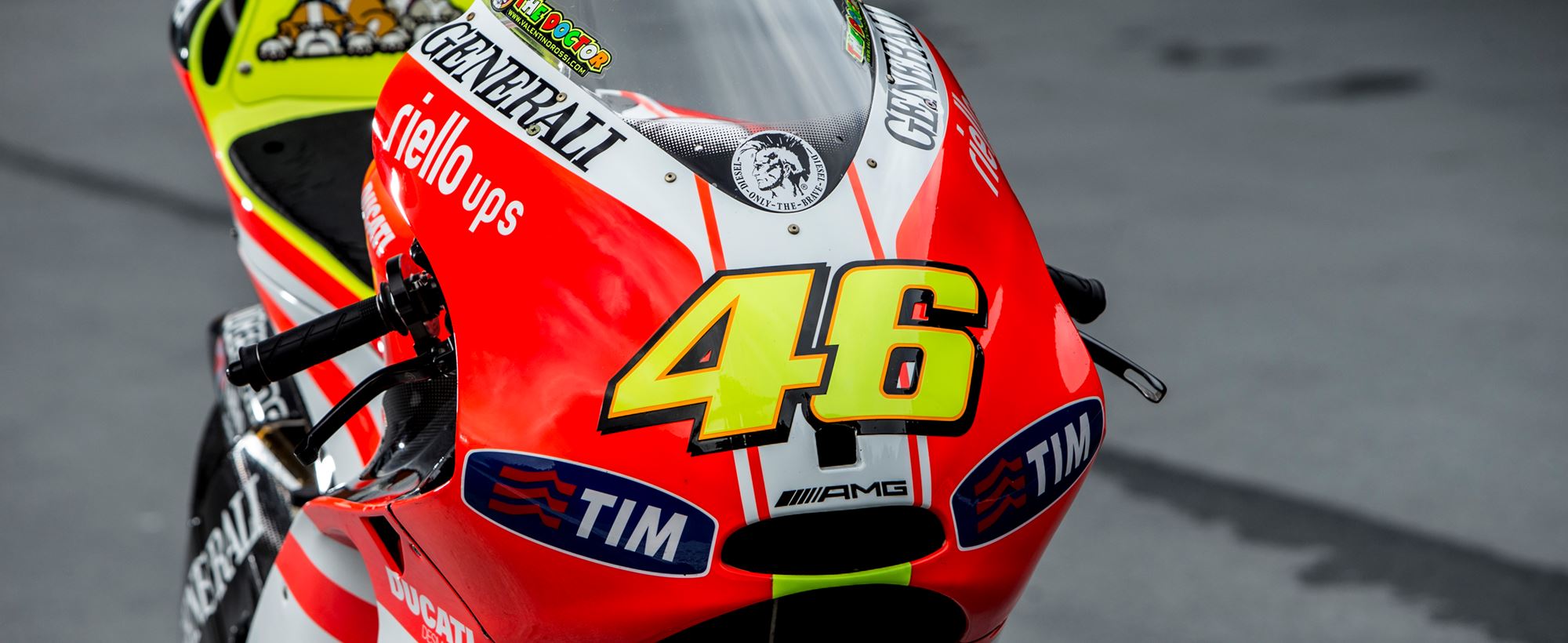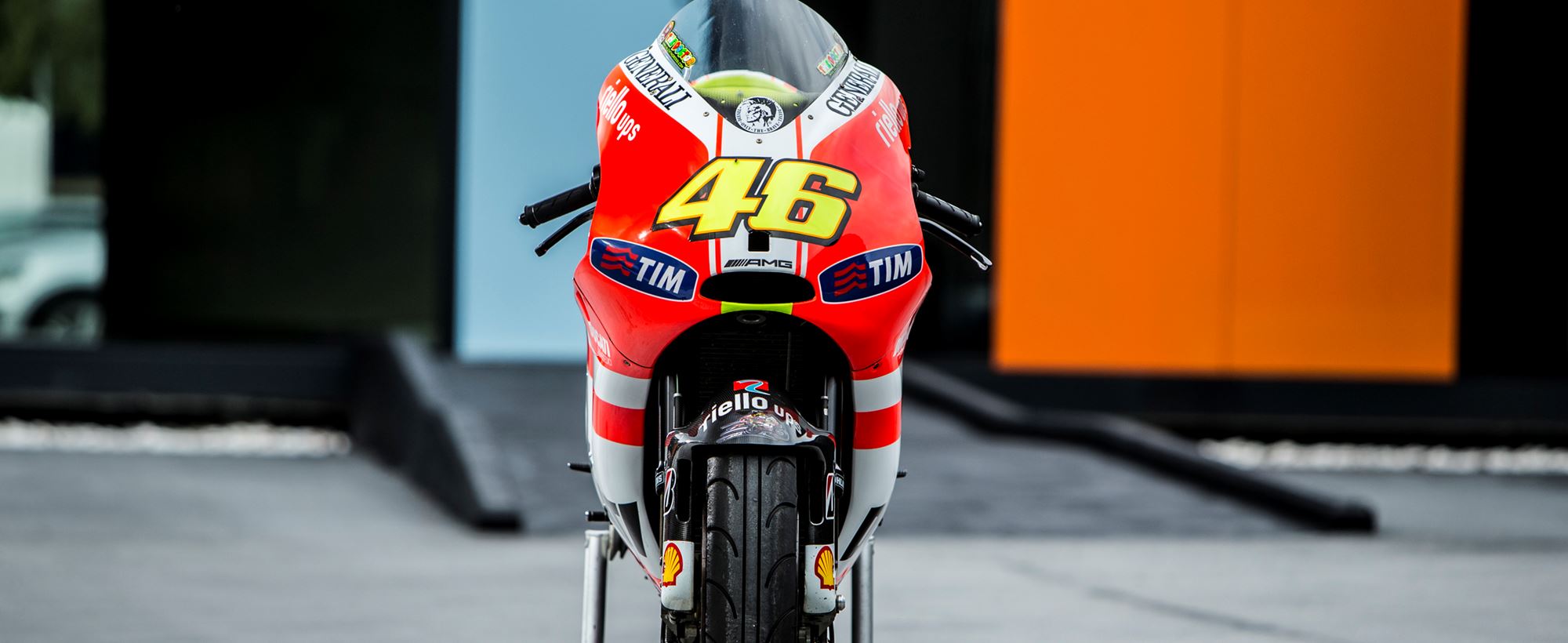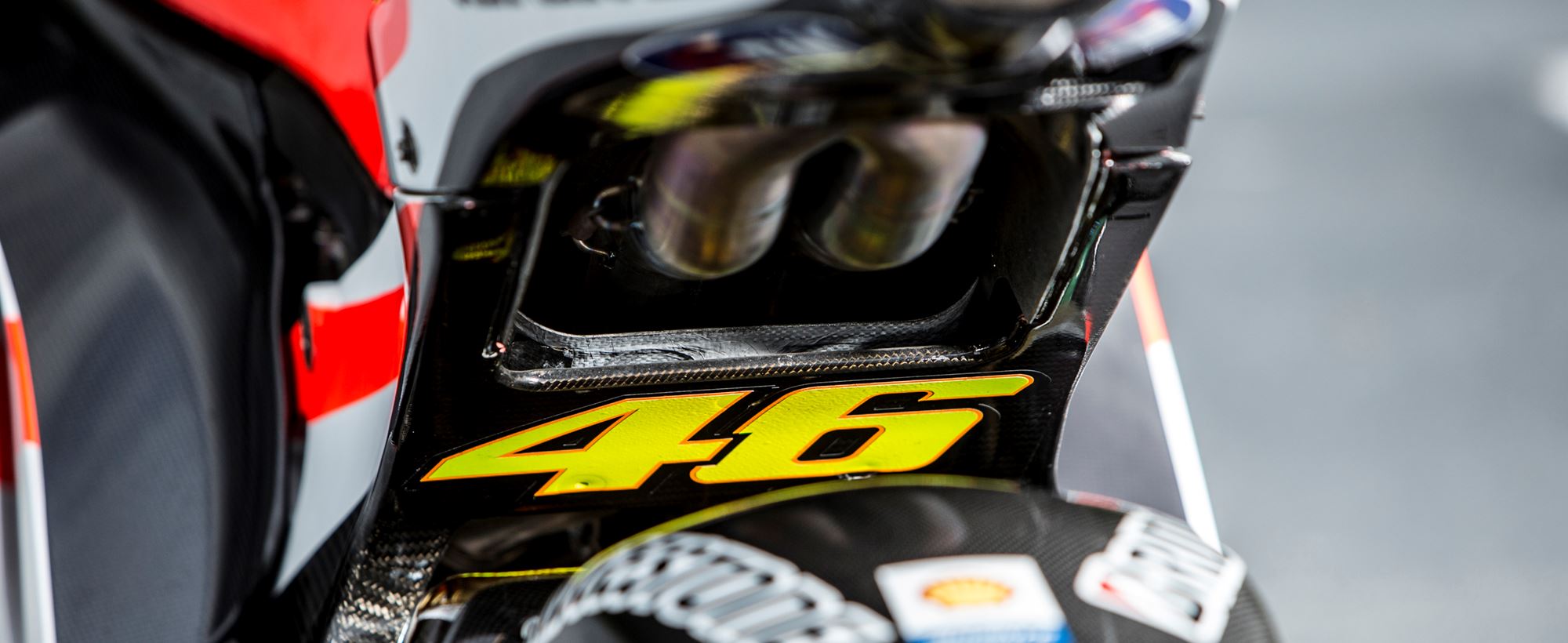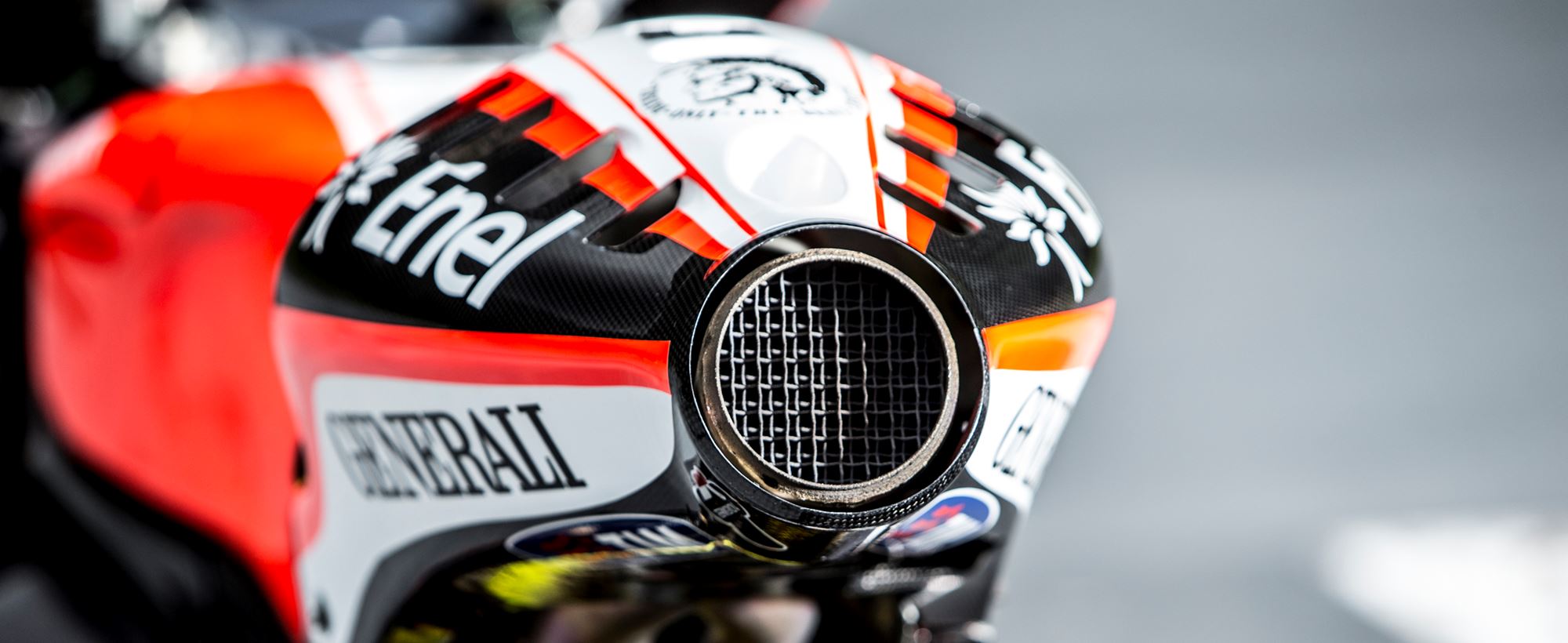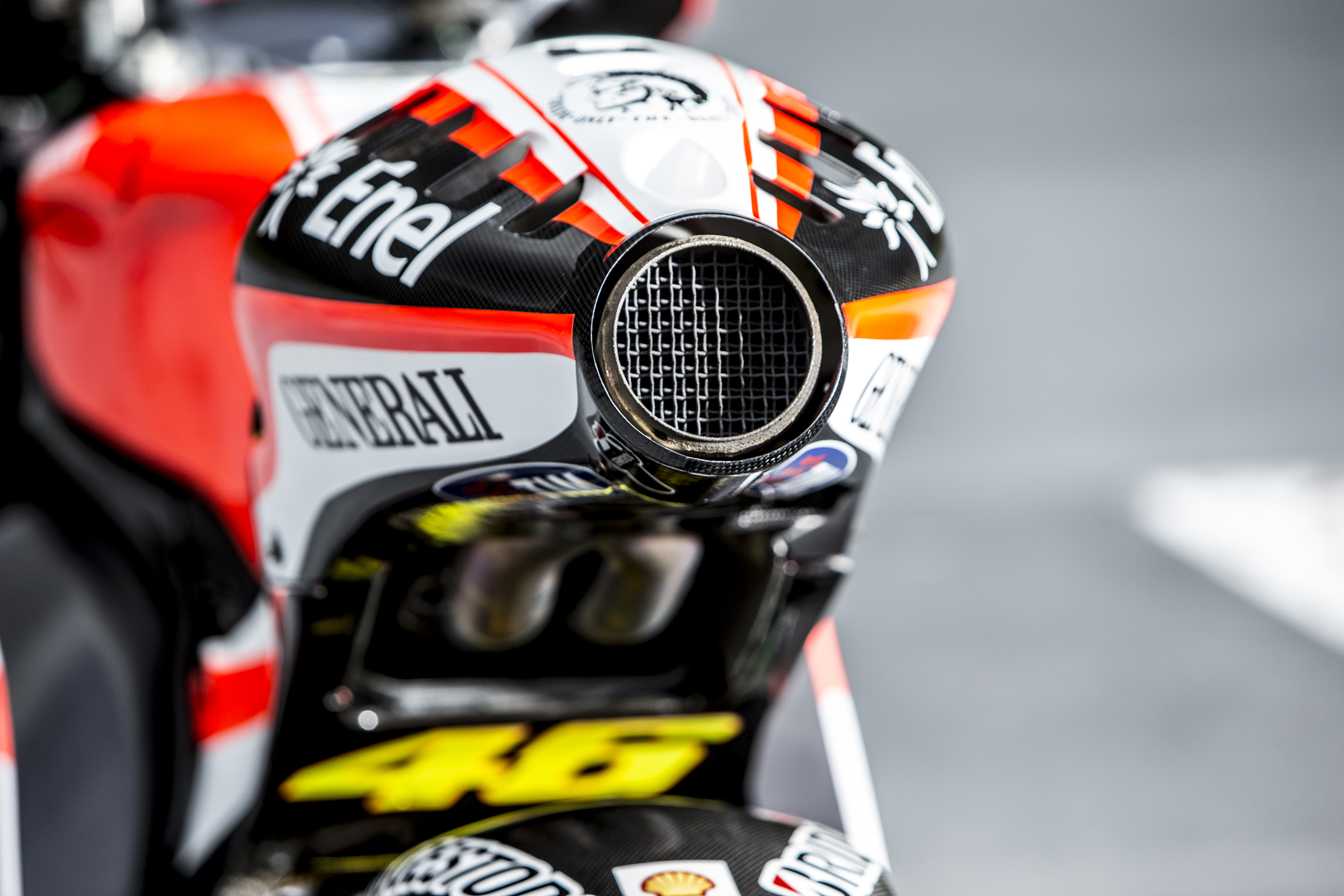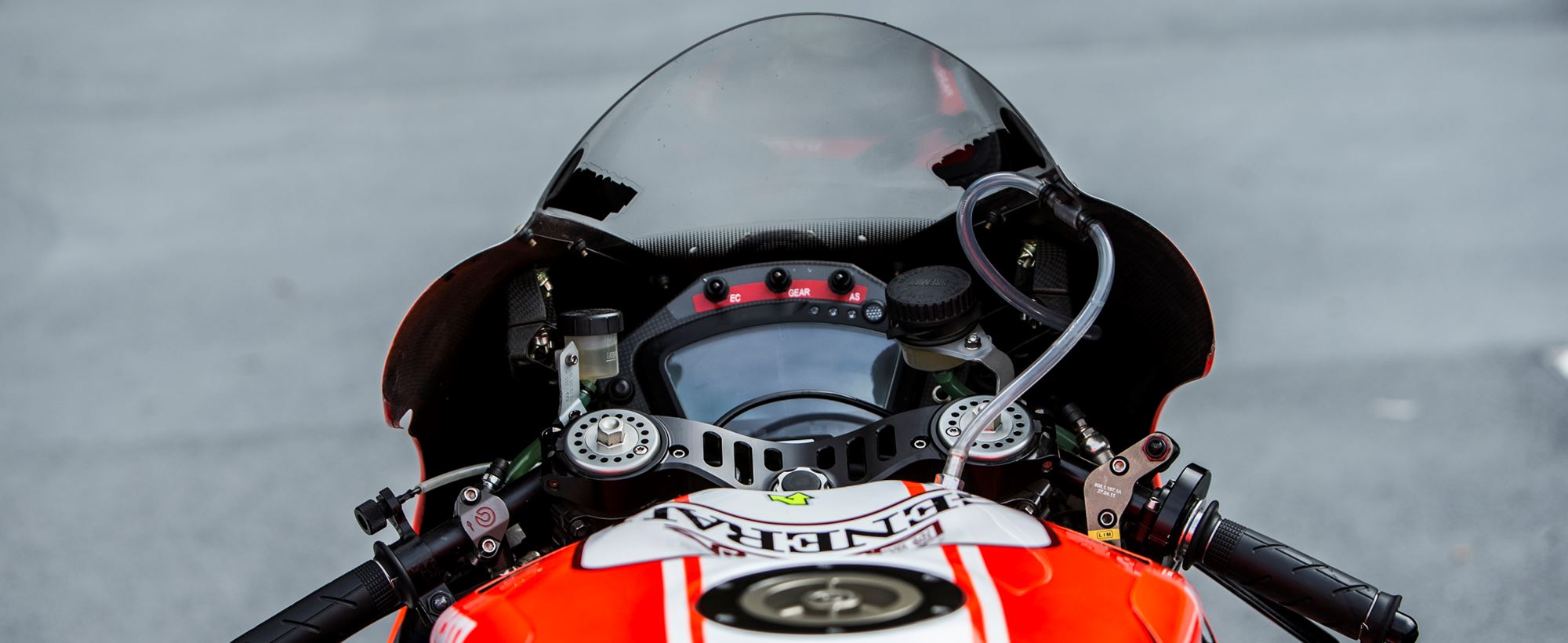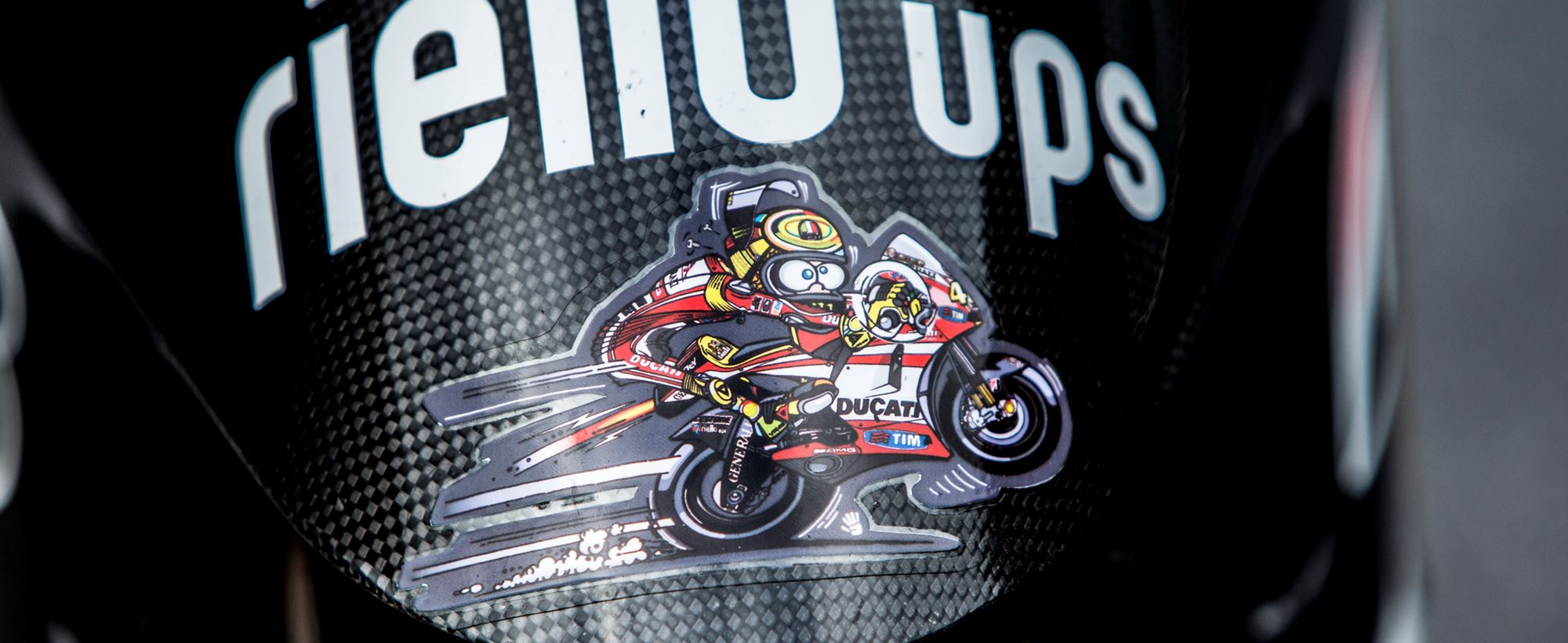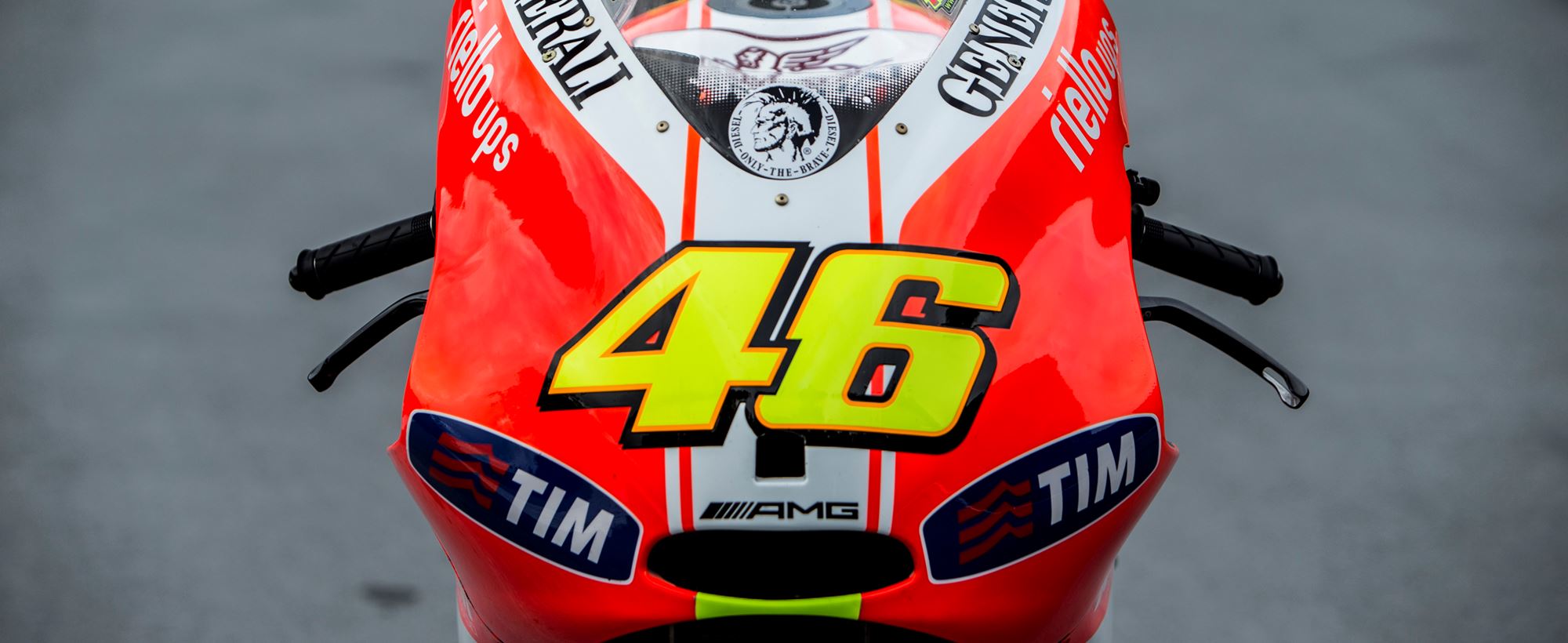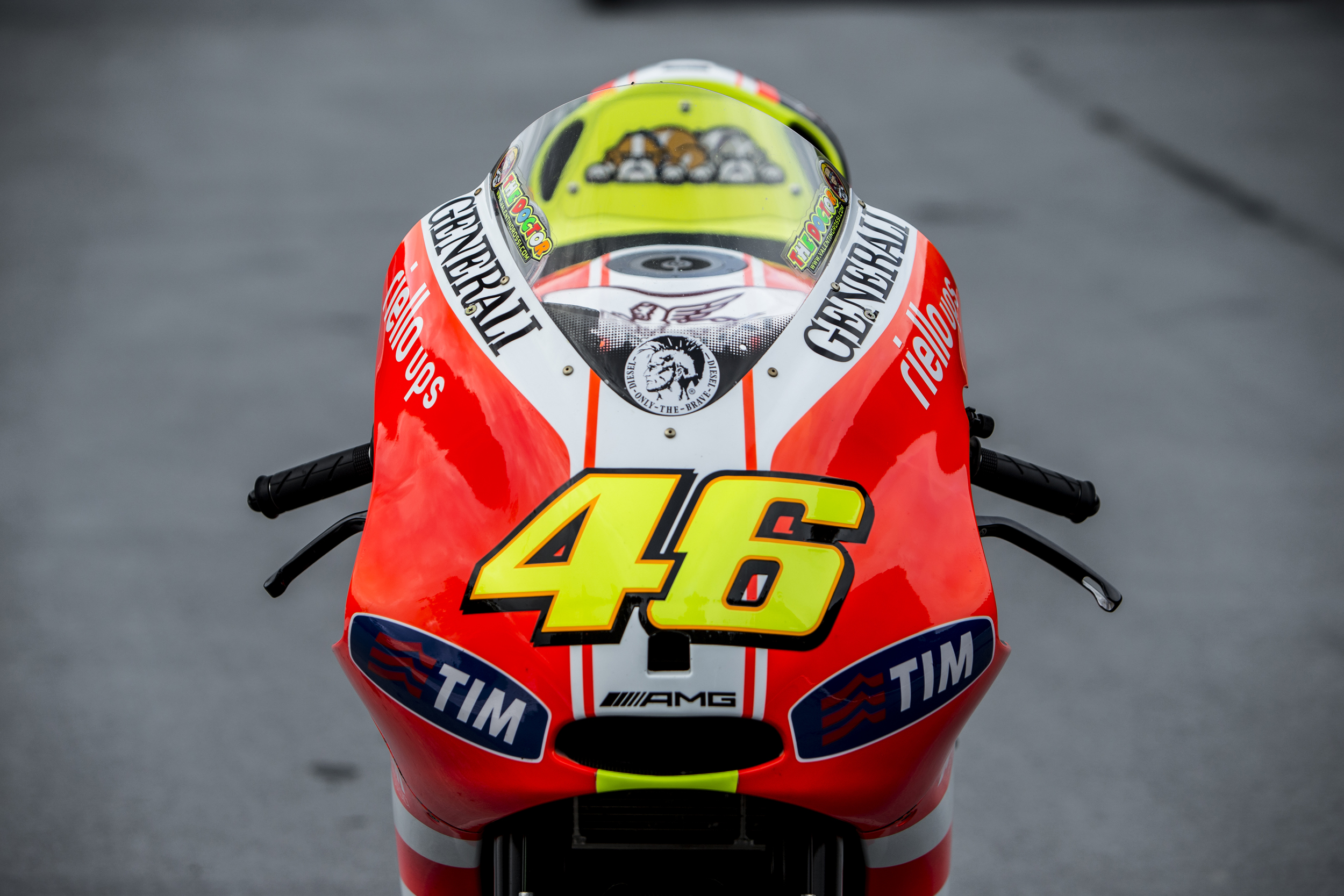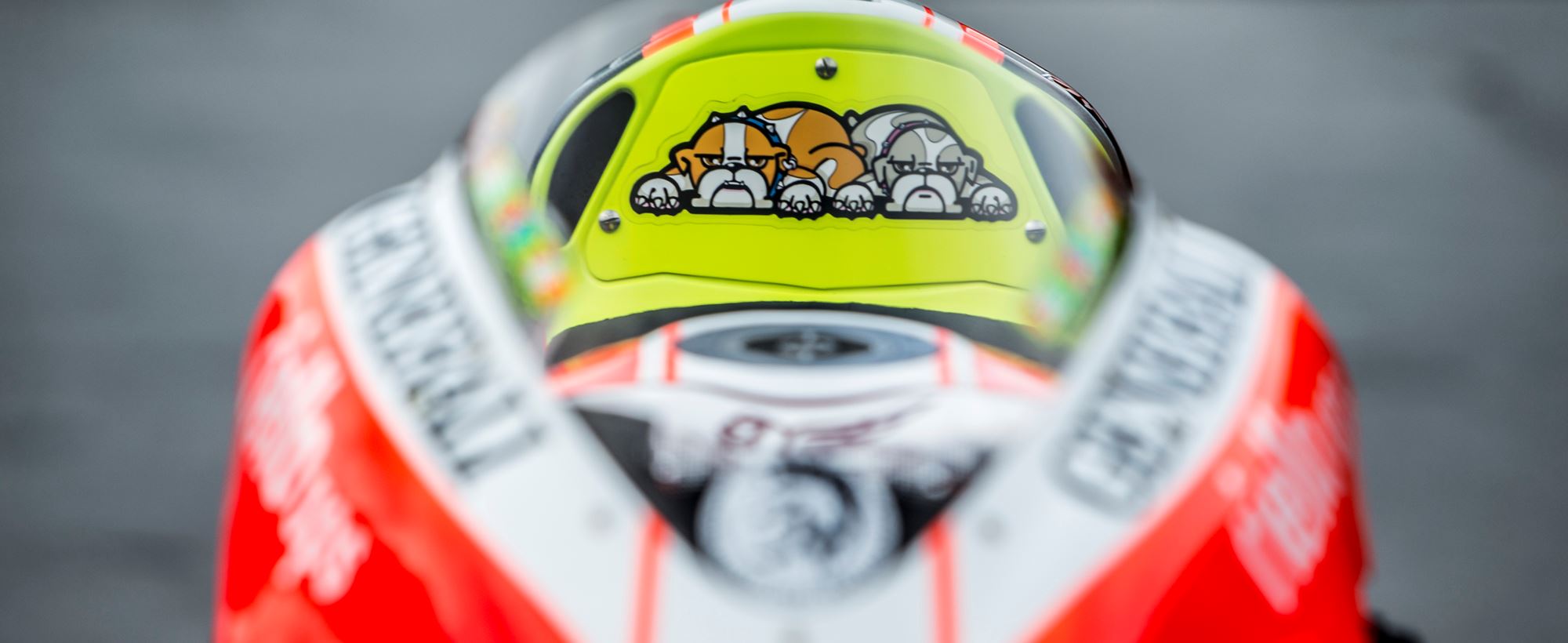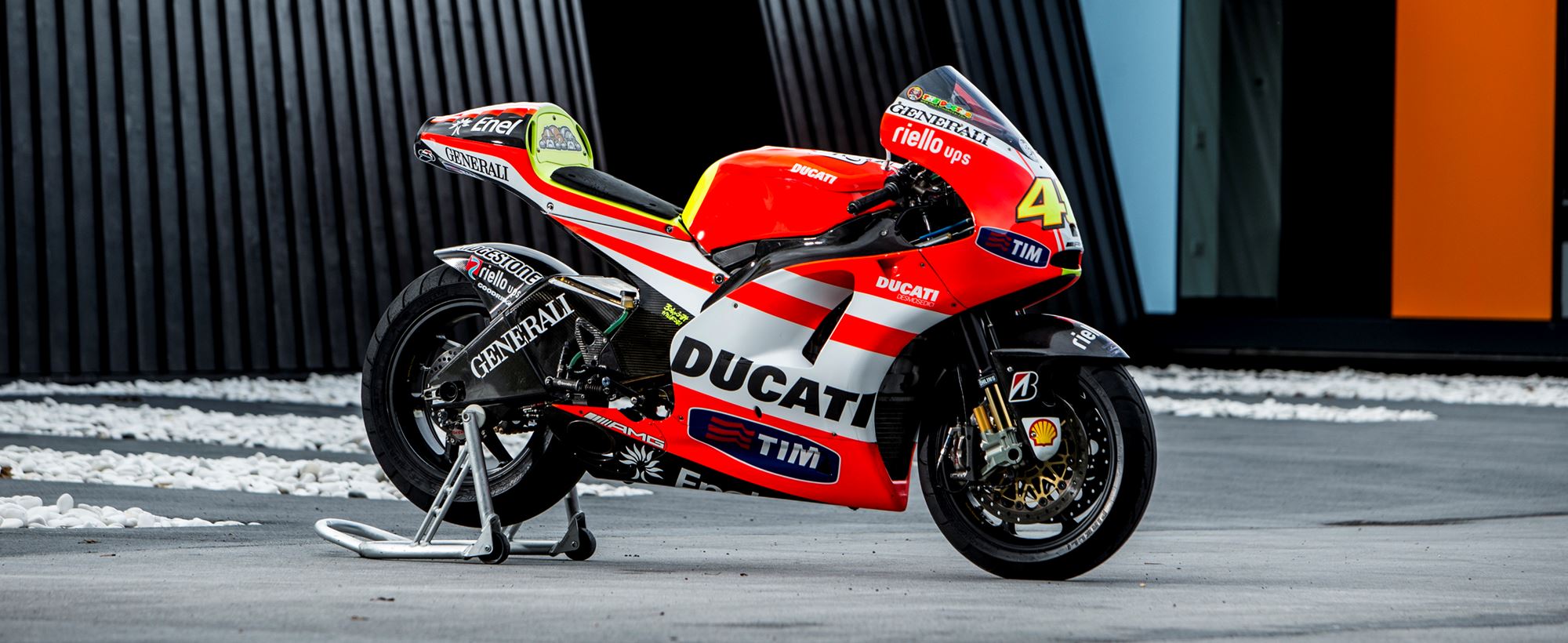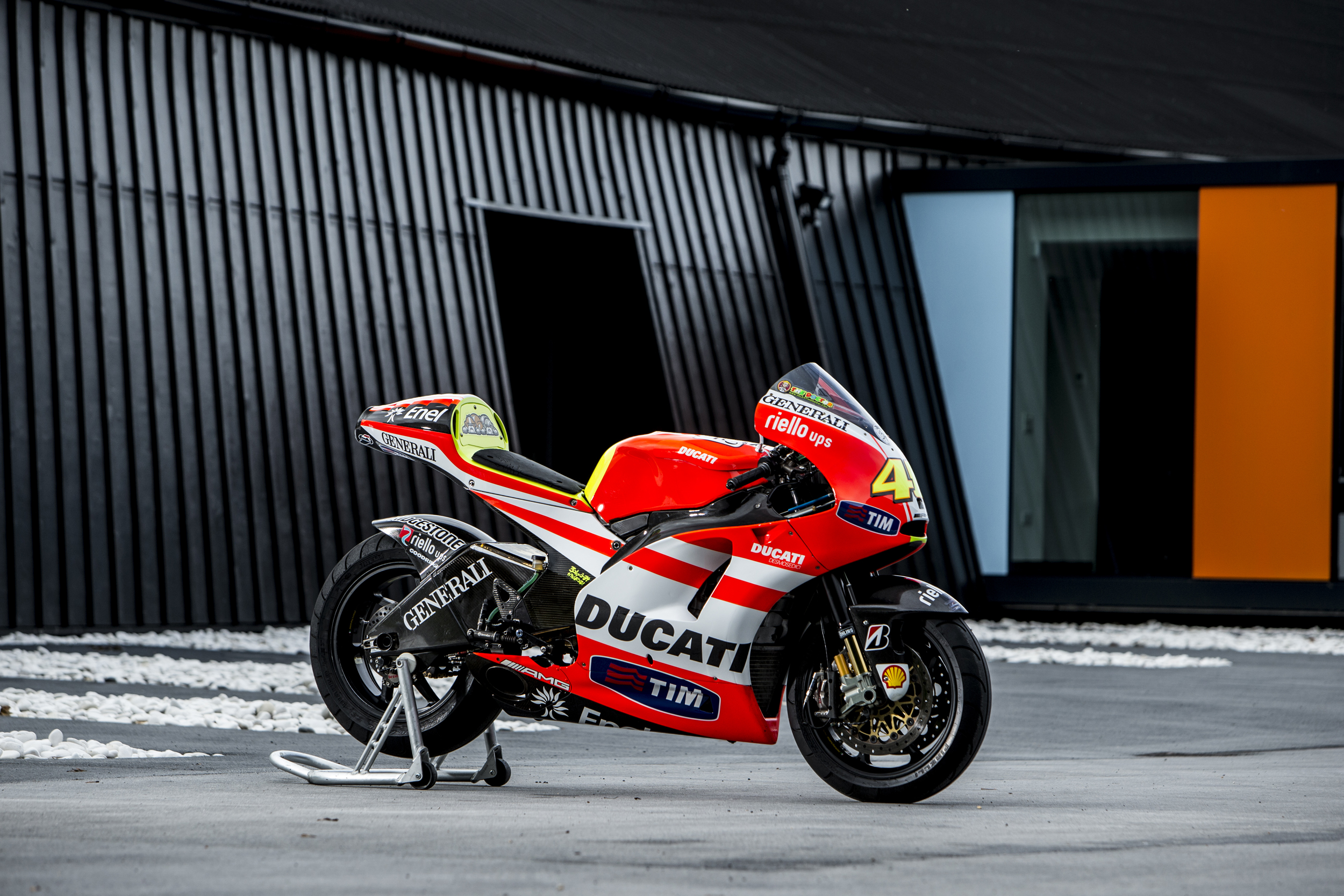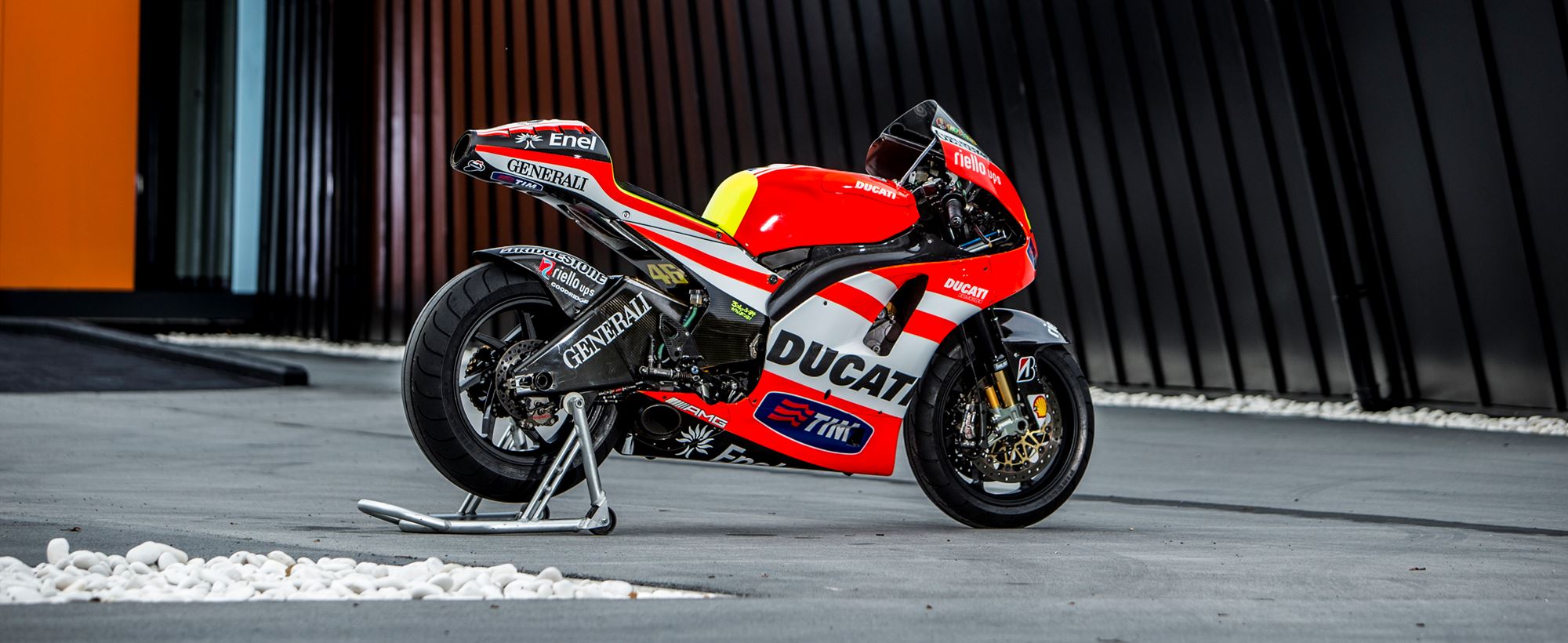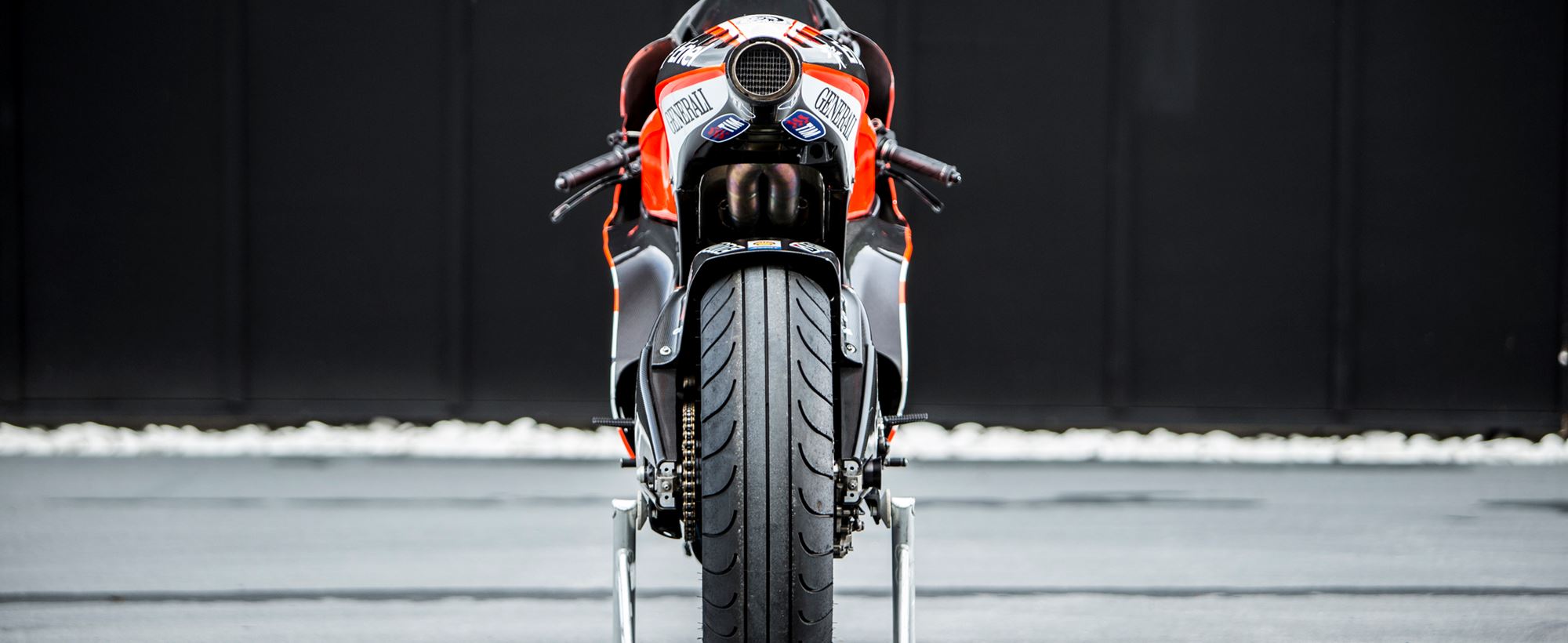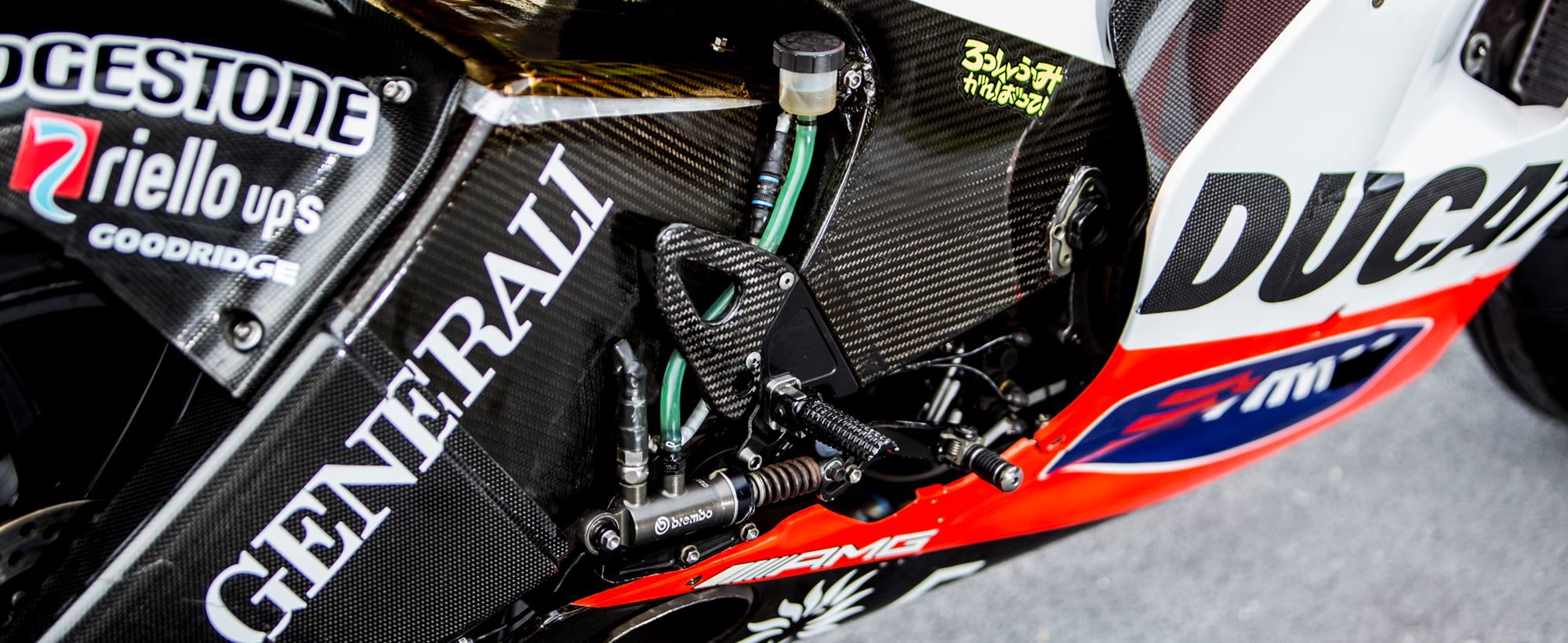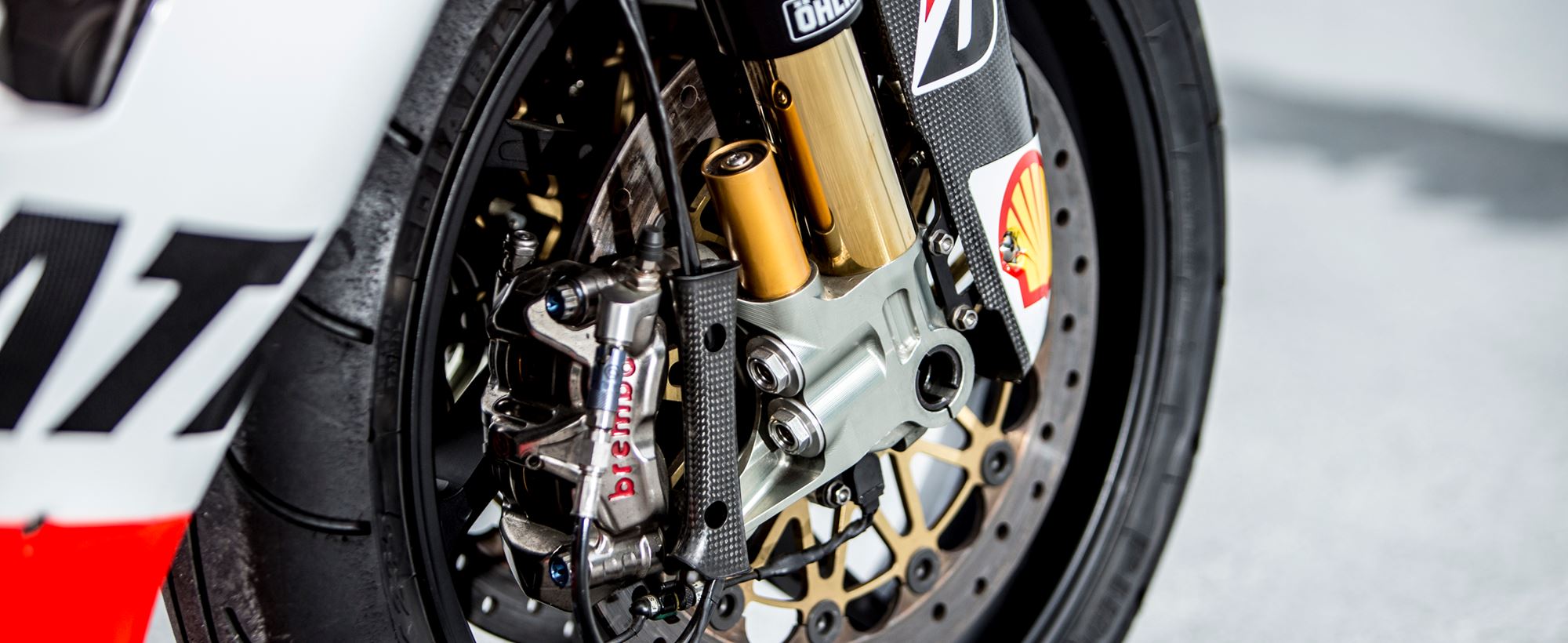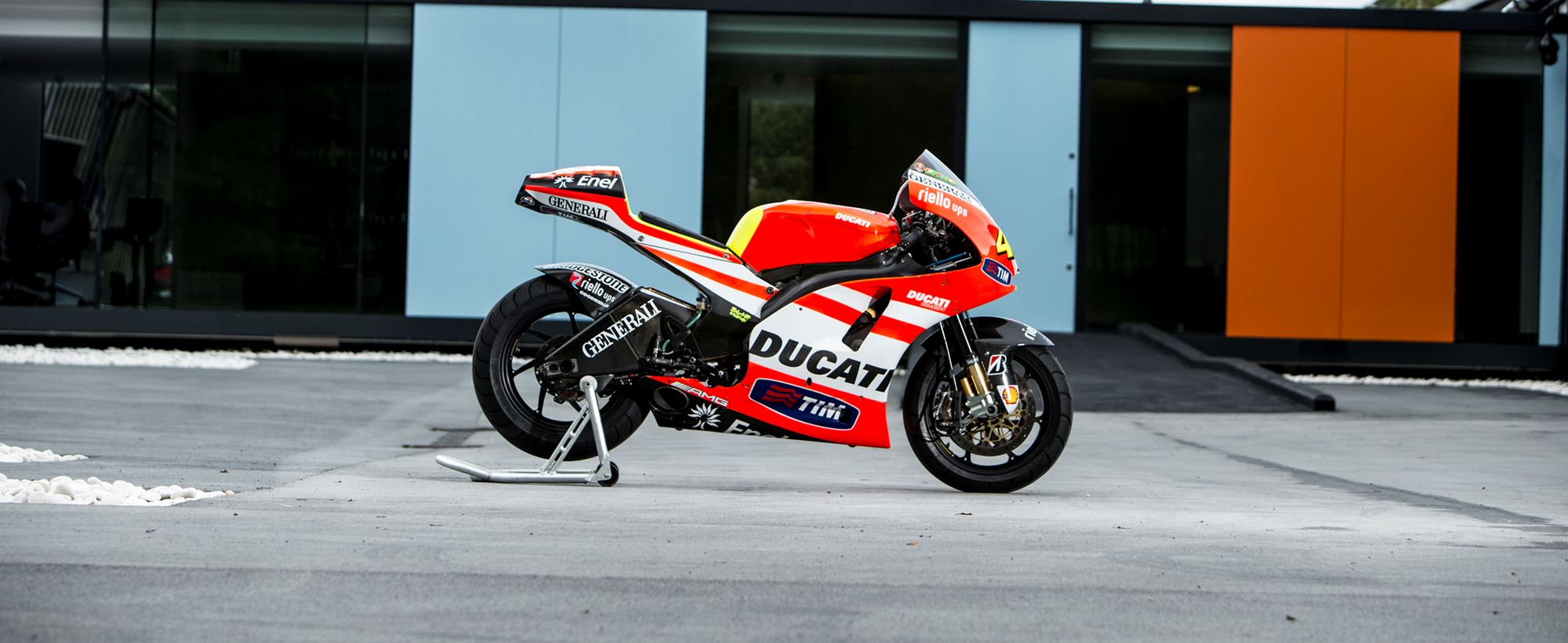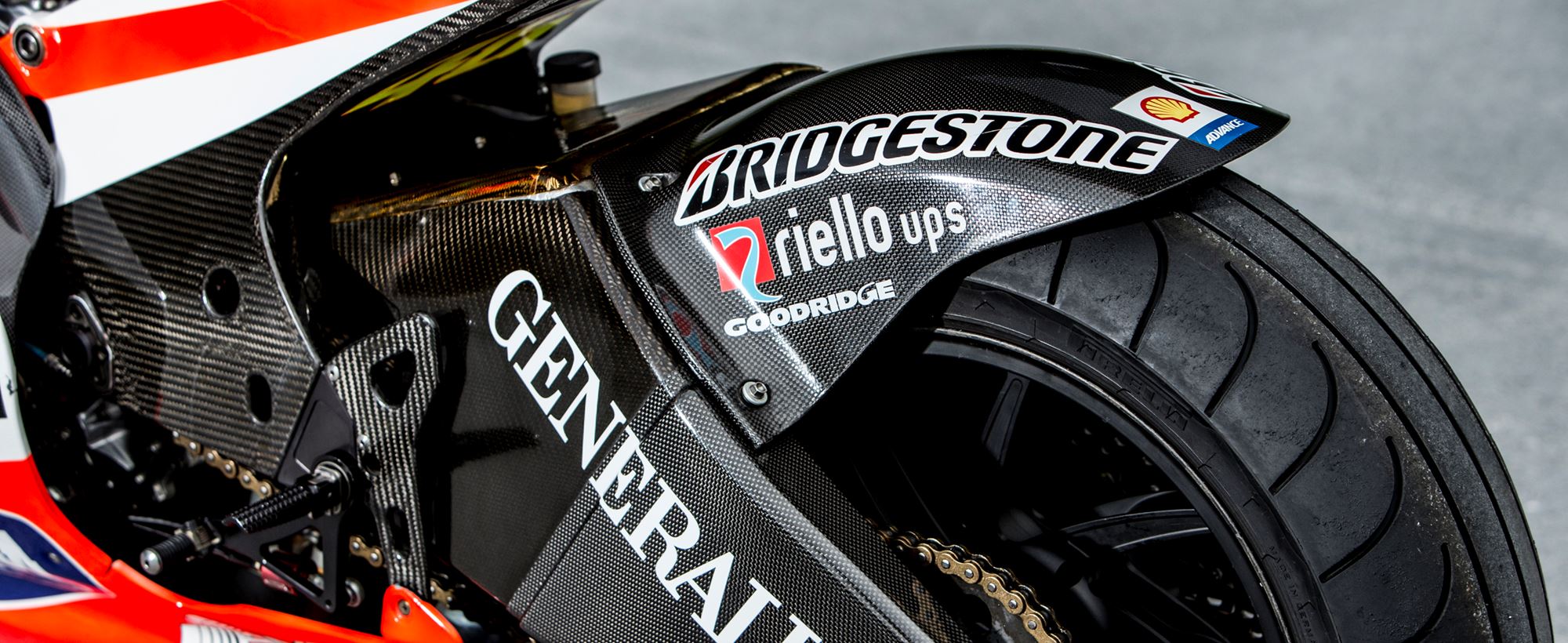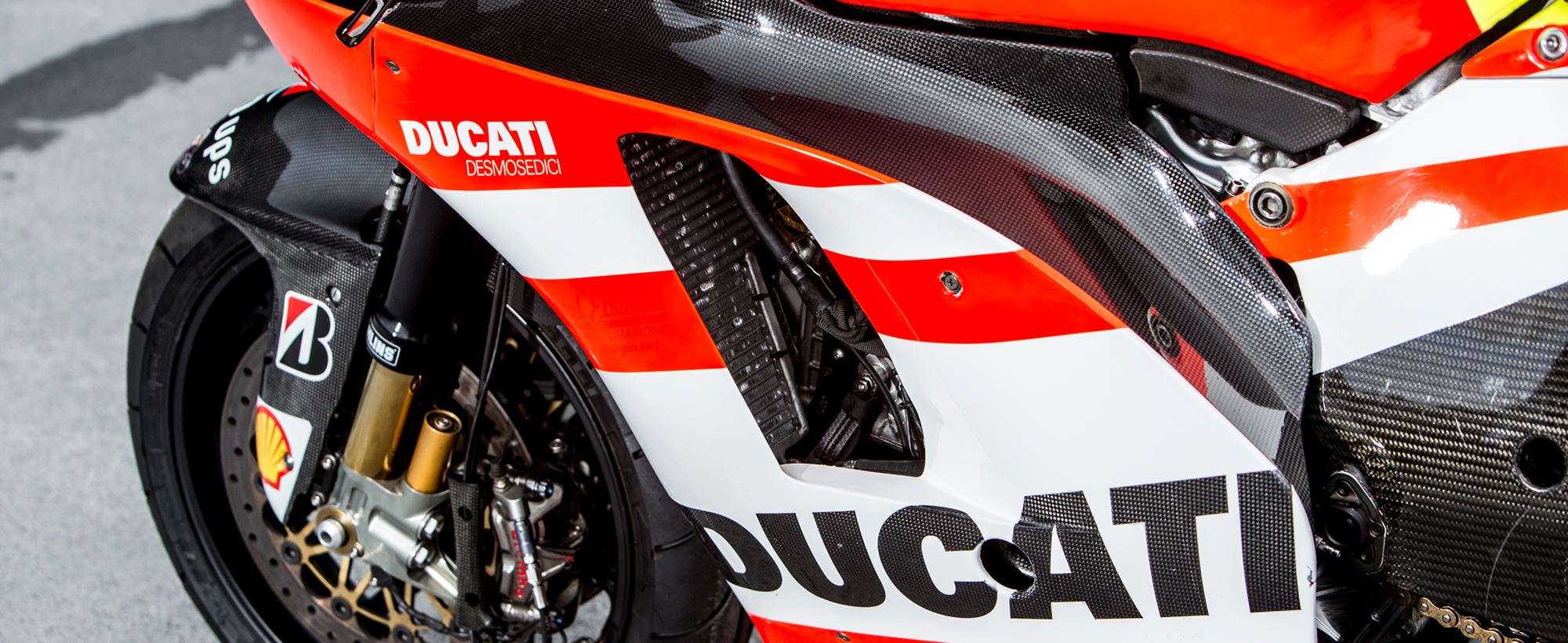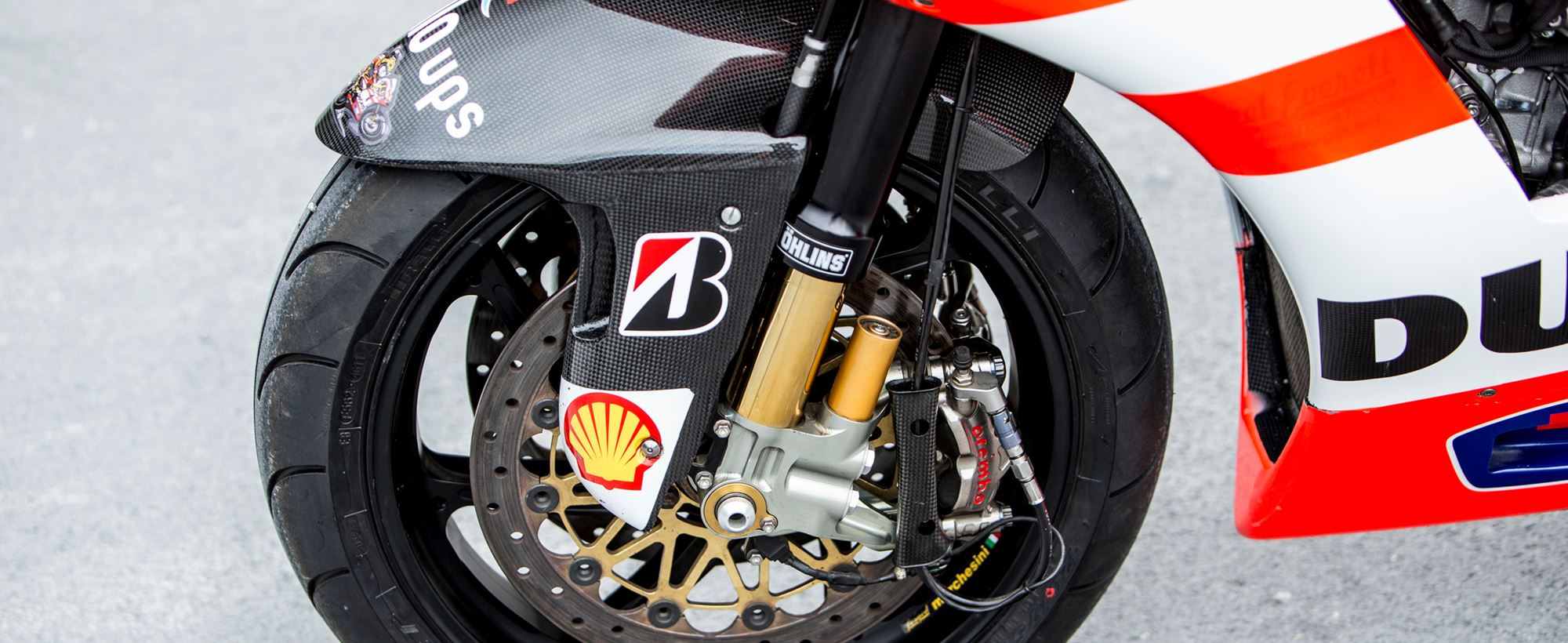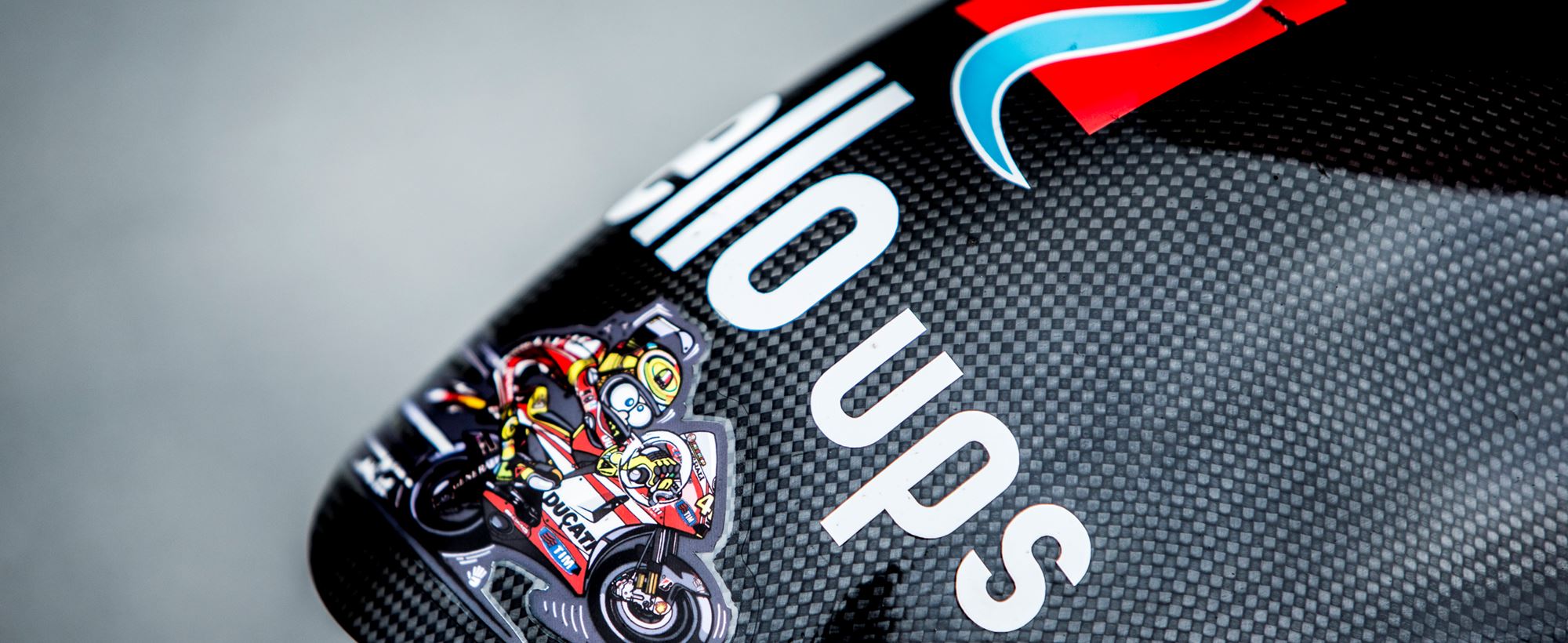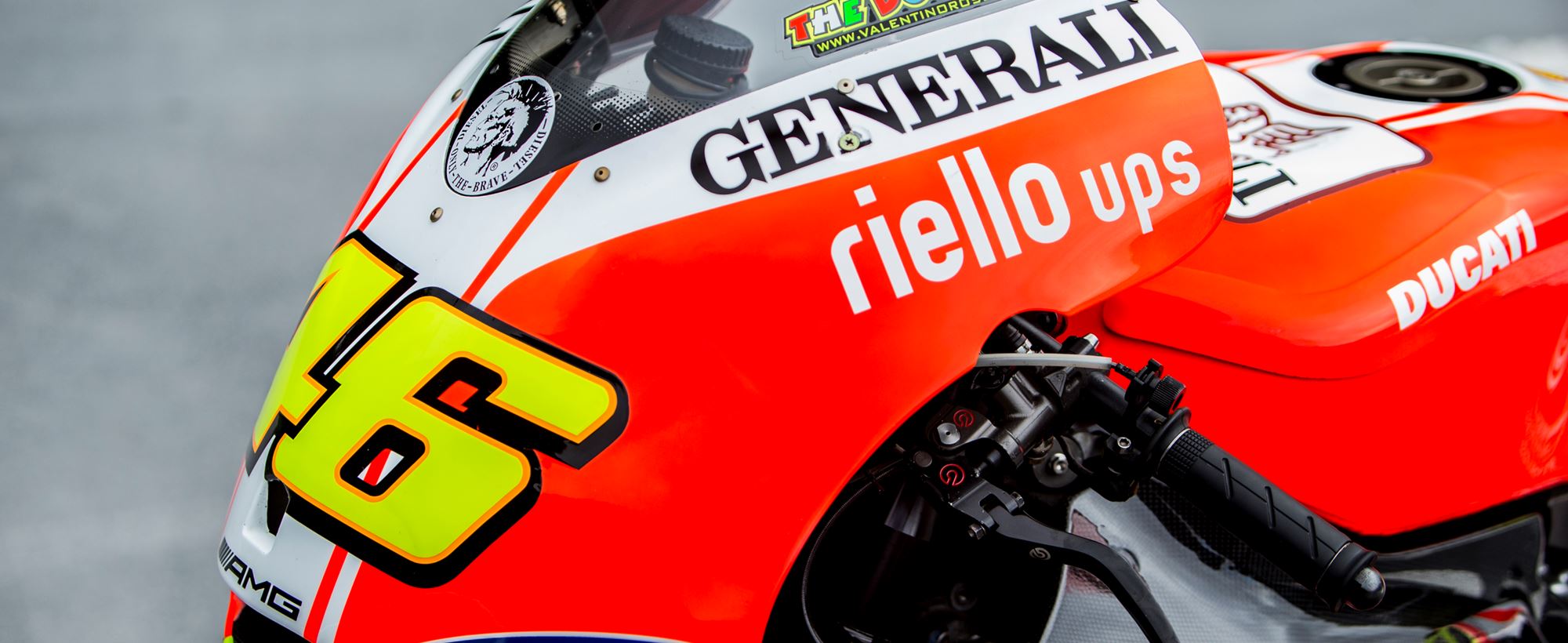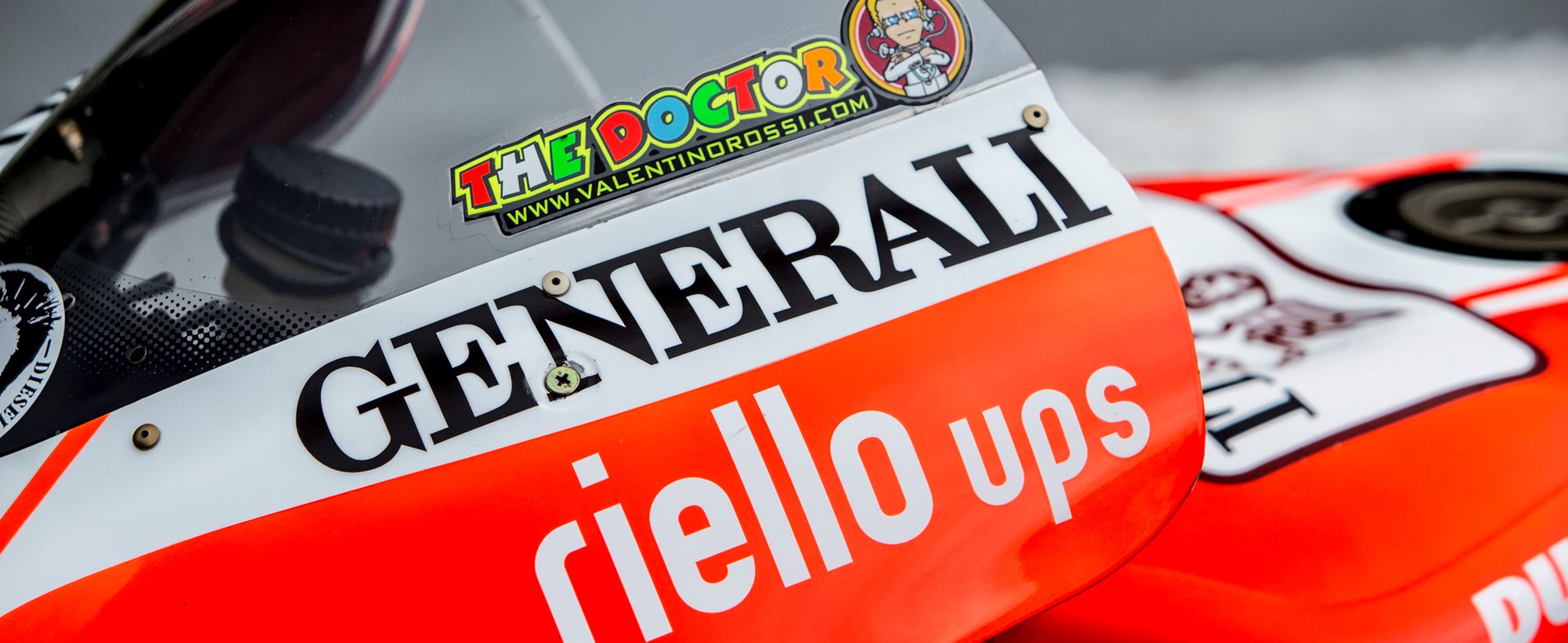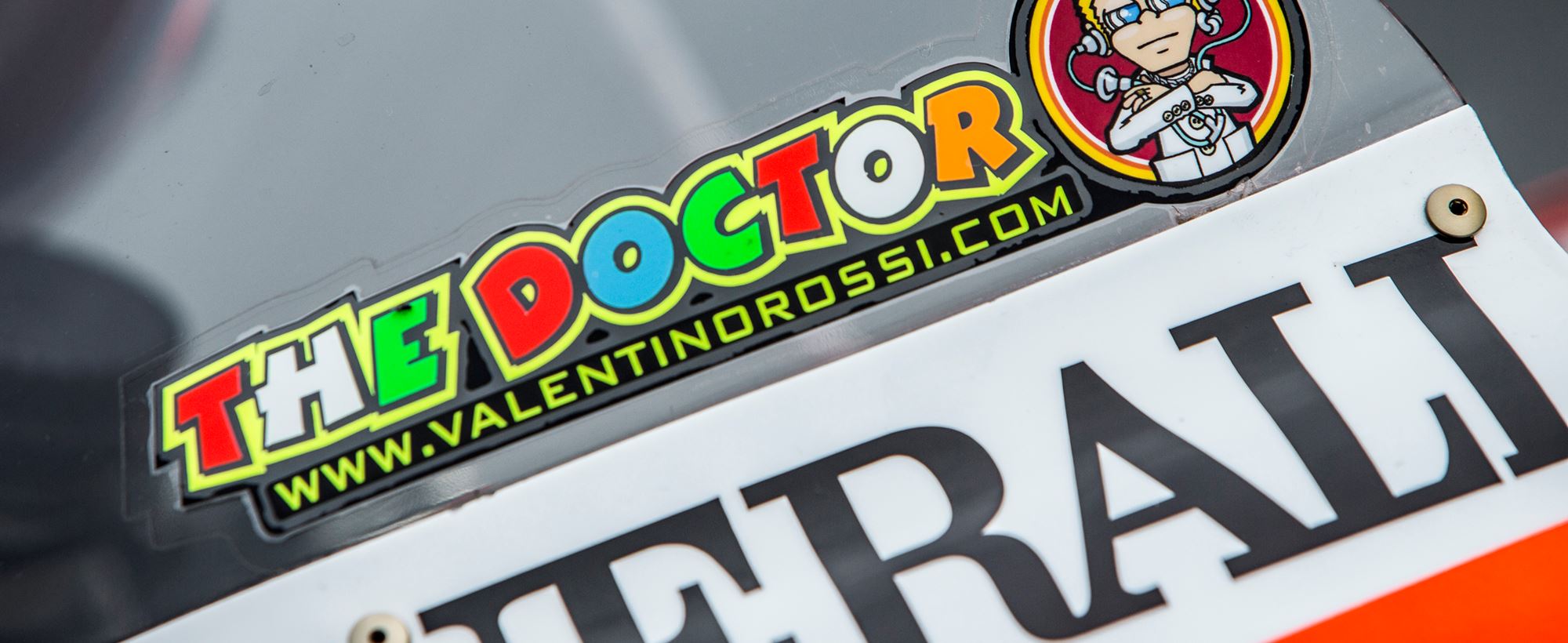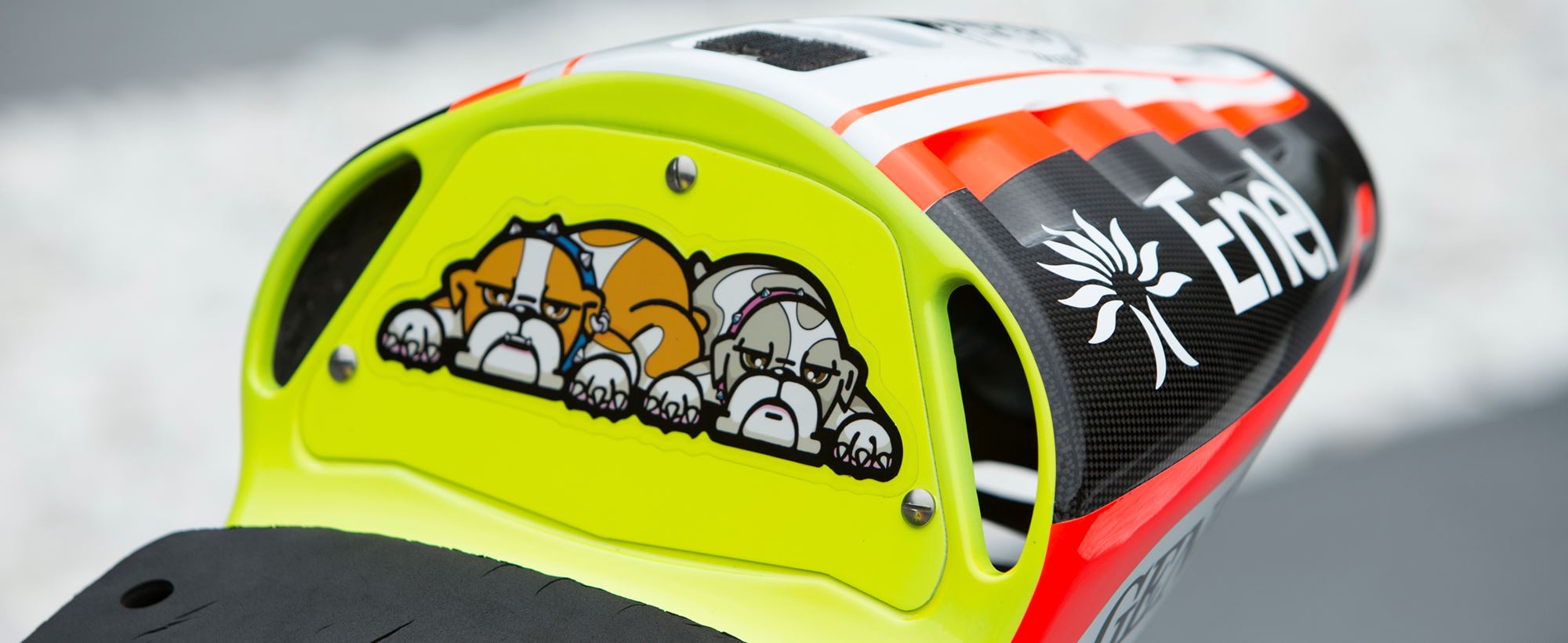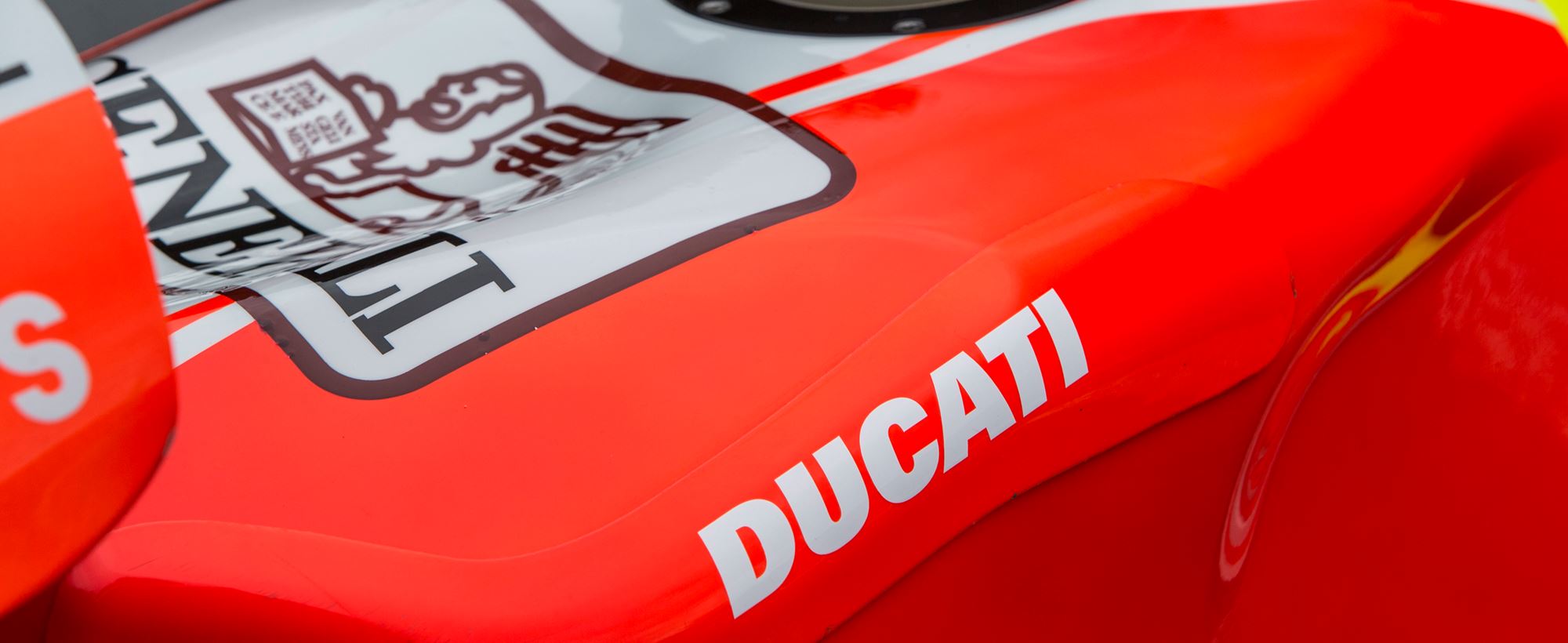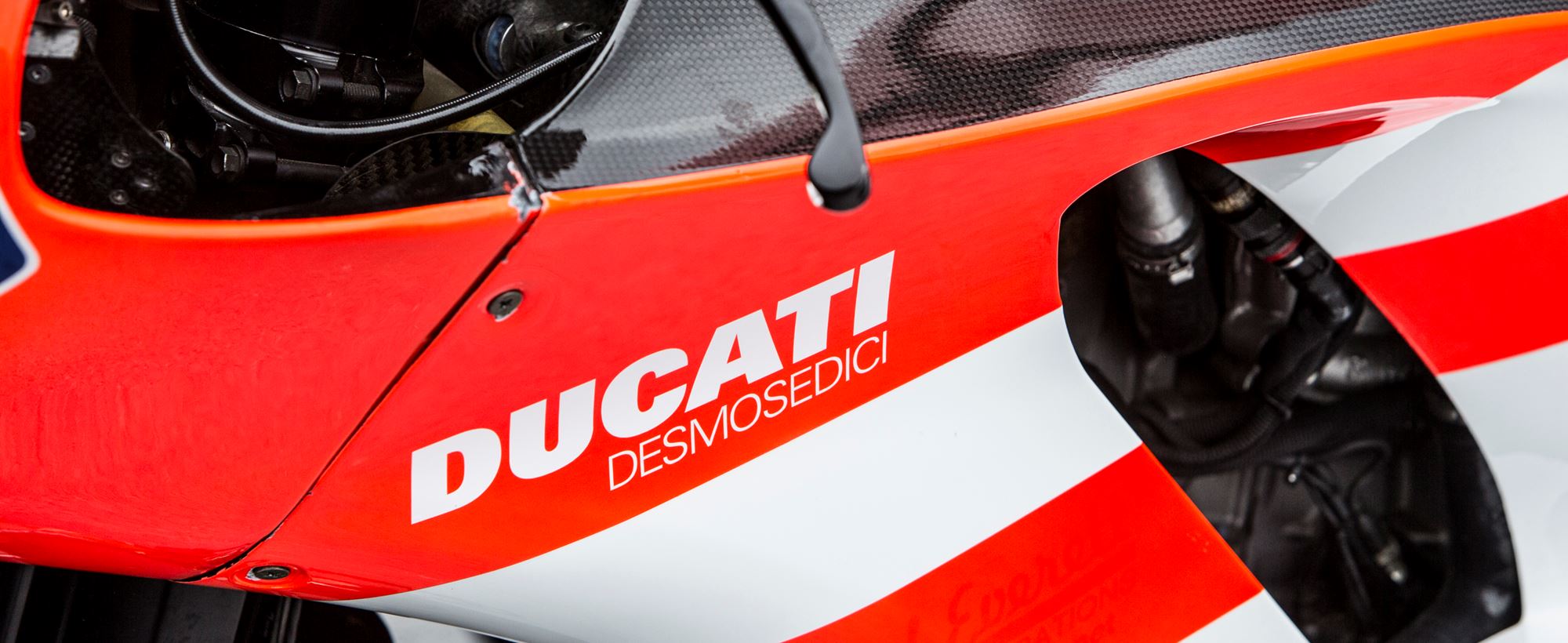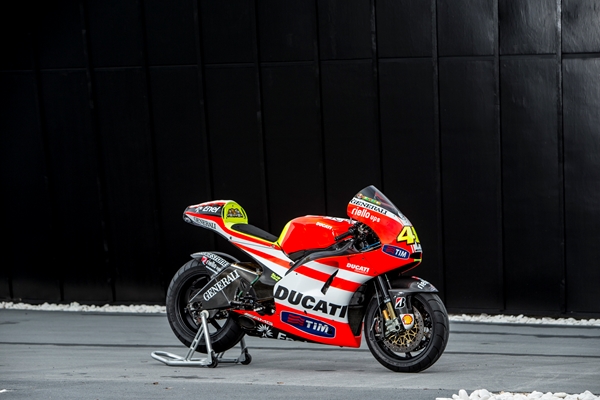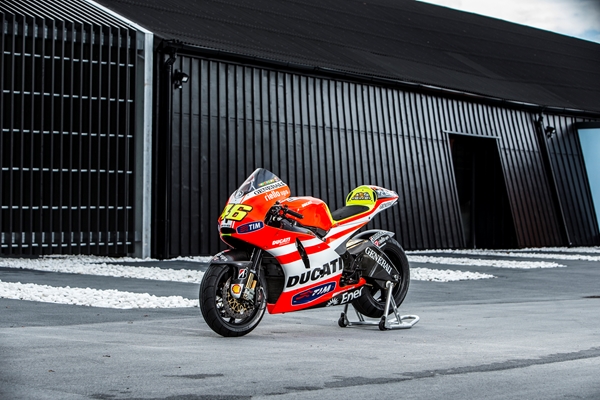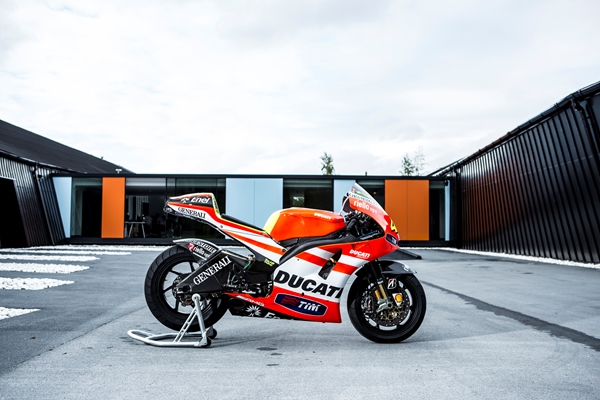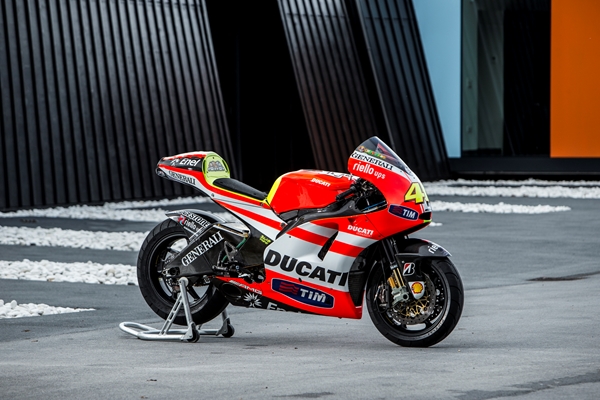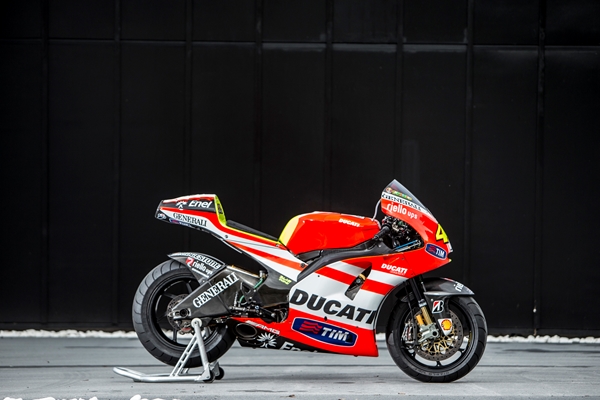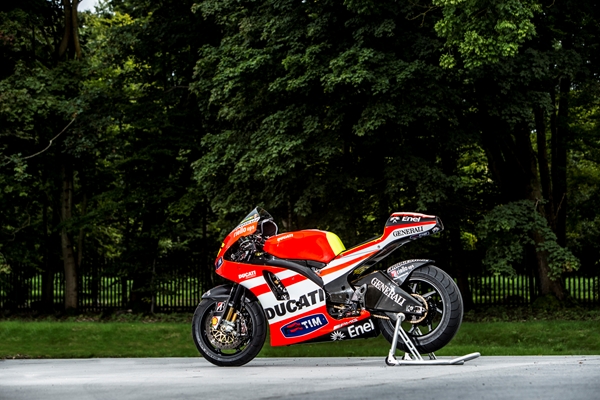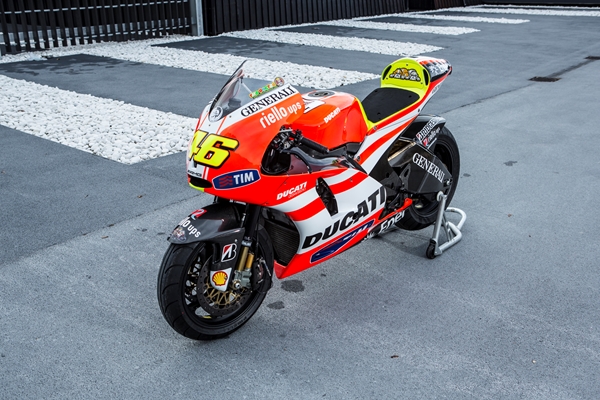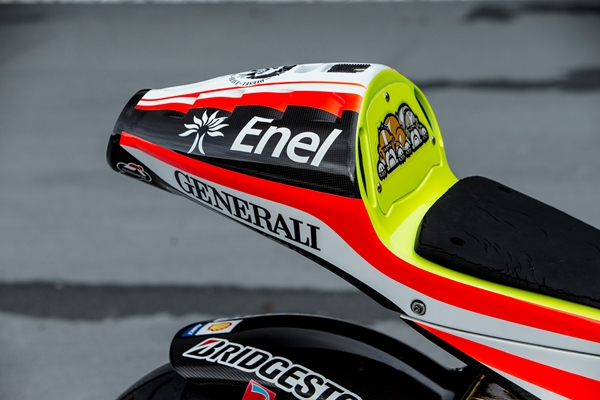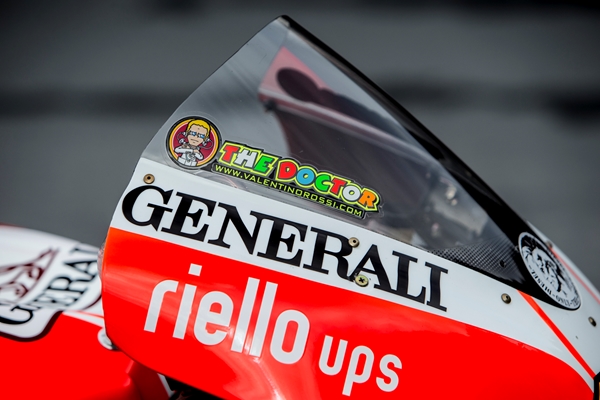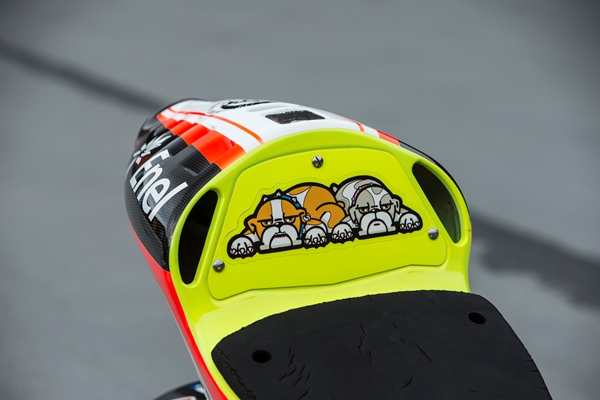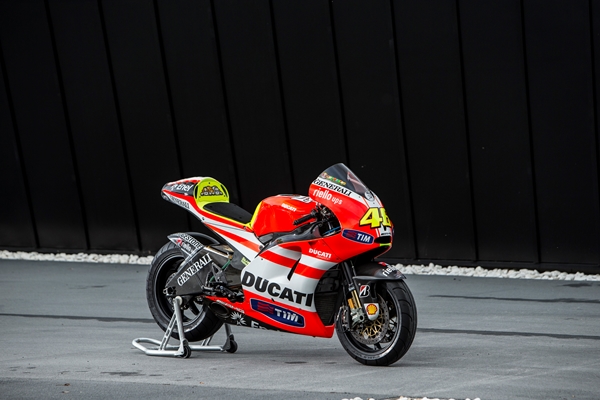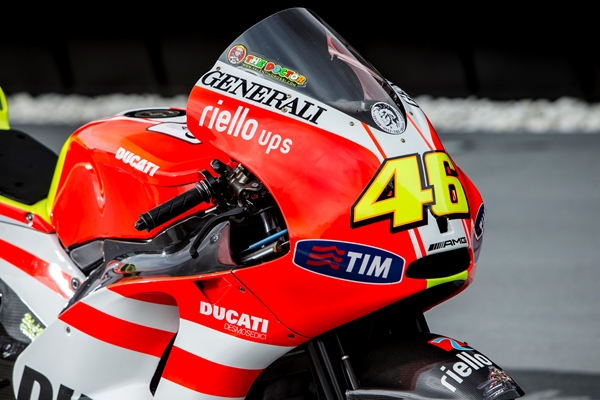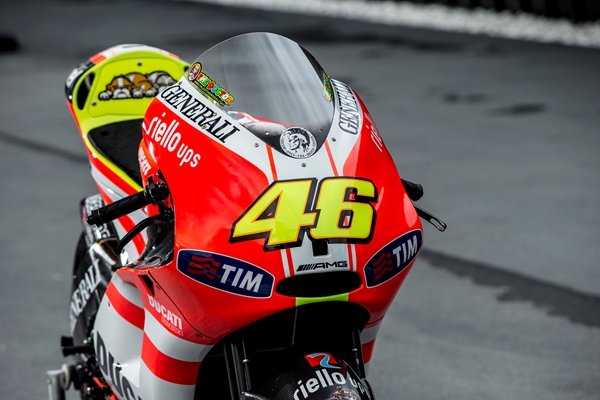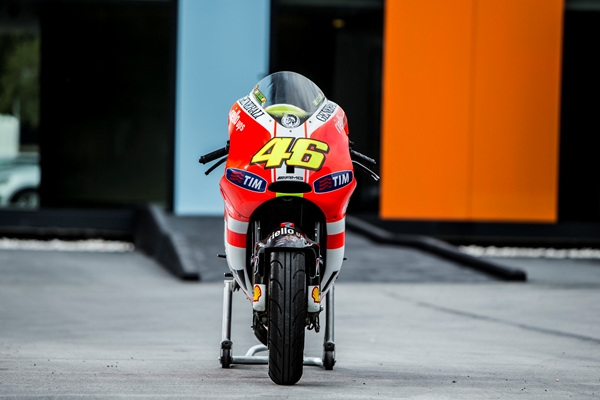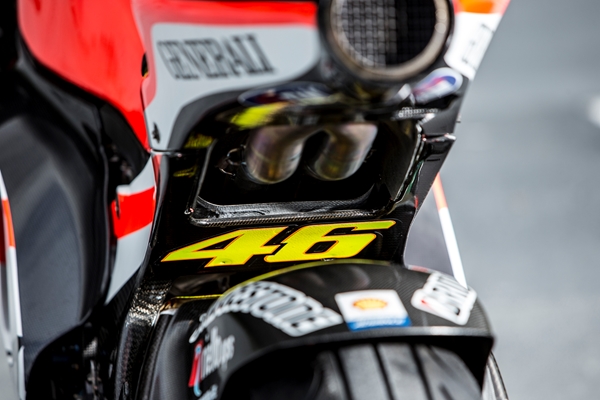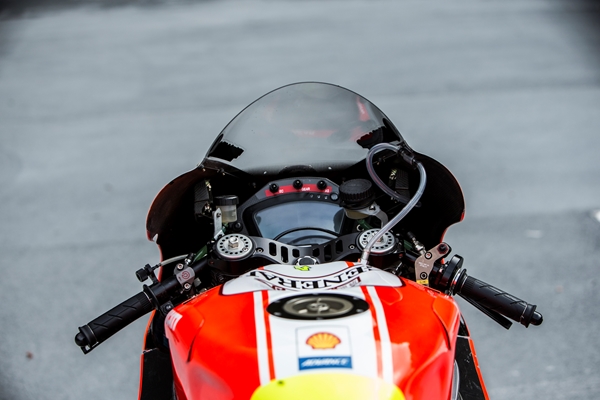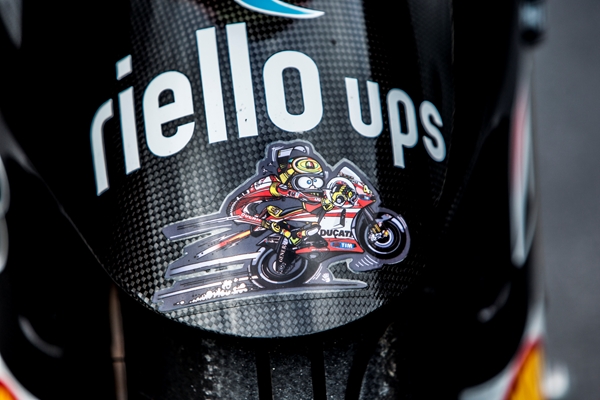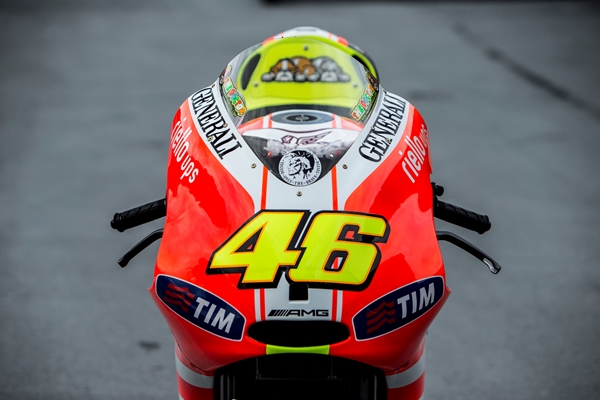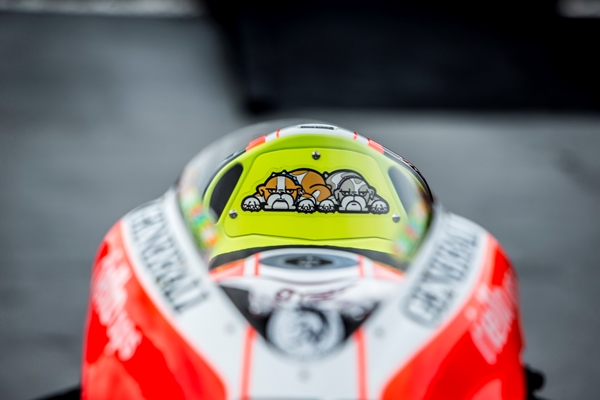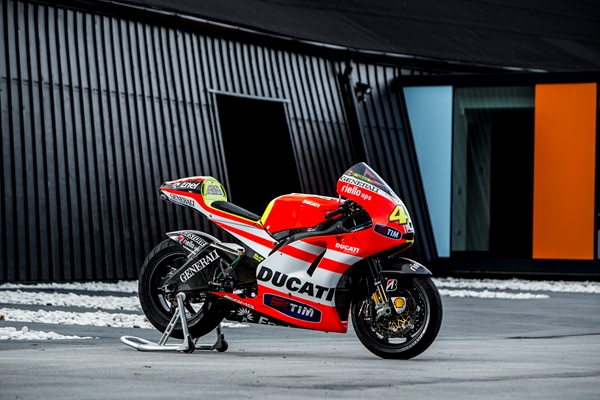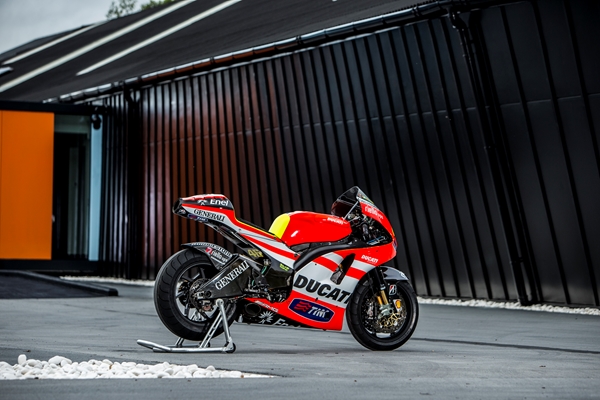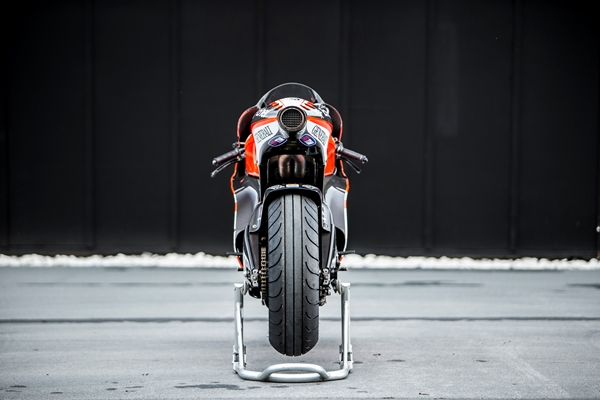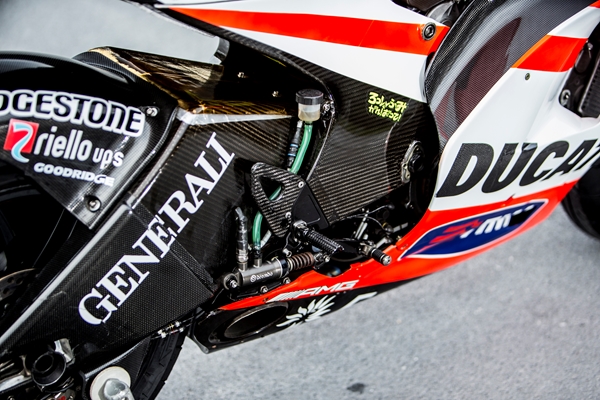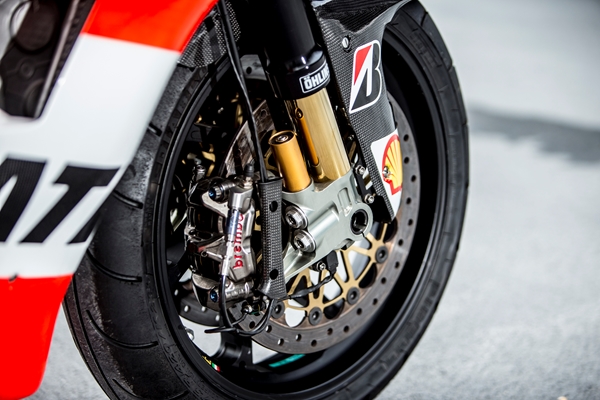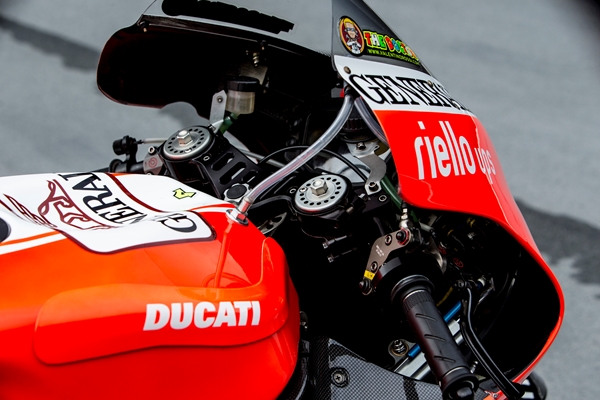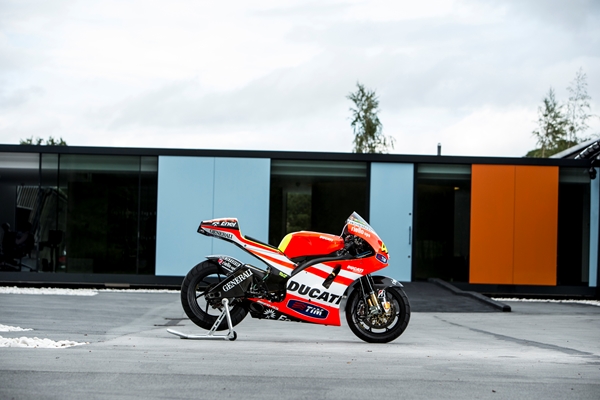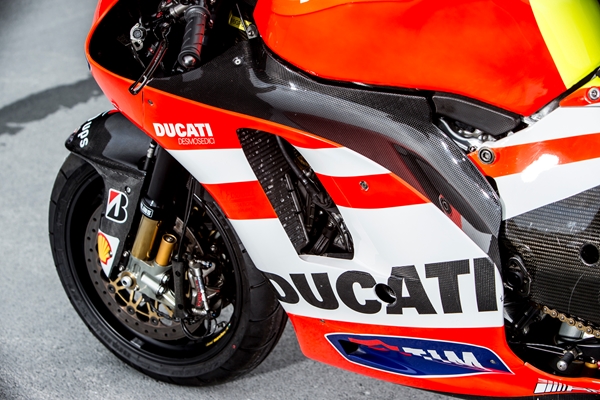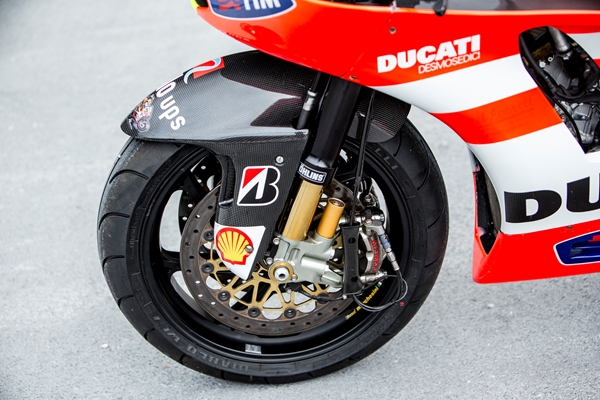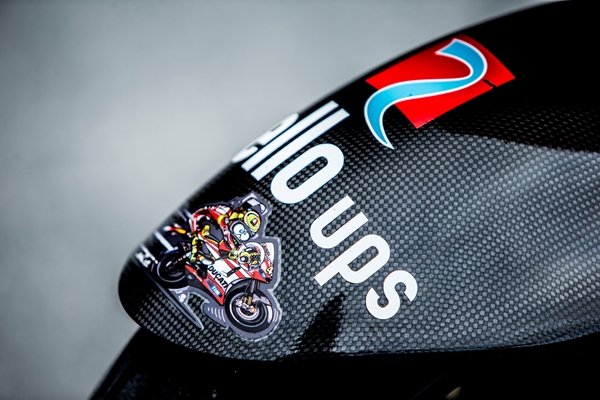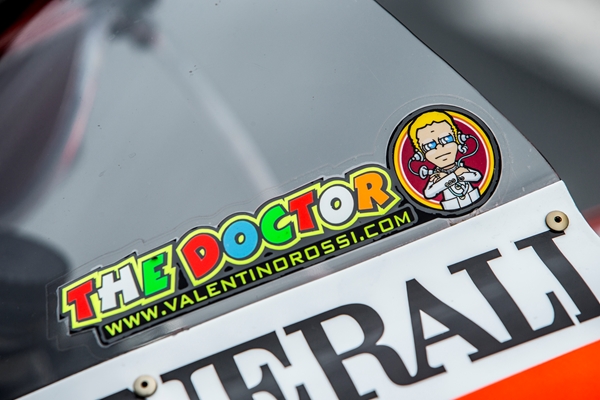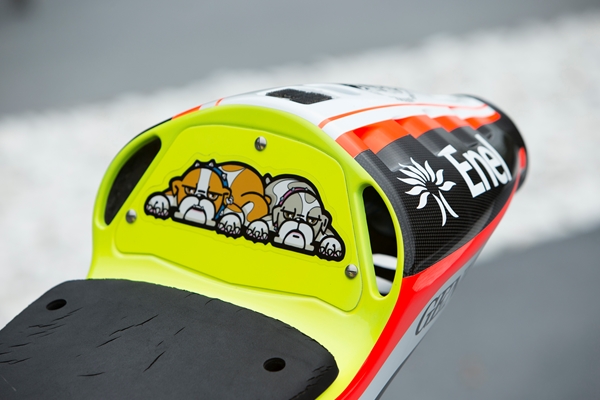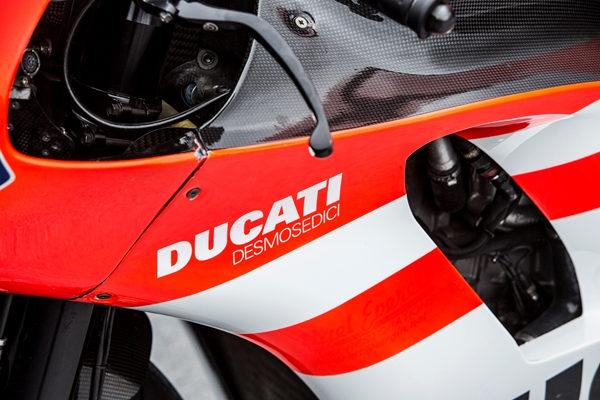History
Built: From 6.12.2010 to 10/12/2010 in Borgo Panigale
Started: 13.12.2010 in Borgo Panigale for bench test
First run: 1.2.2011 in Sepang Test
First race: 20.3.2011 in Qatar
3rd place: 15.5.2011 at Le Mans
Last race: 12.6.2011 in Assen
A unique opportunity to acquire of the world's most significant modern racing motorcycles, as ridden to a podium by the greatest rider of the modern generation; Valentino Rossi. Not only is this bike running, it is the one and only complete ex-Valentino Rossi Ducati sold by the Ducati Course Factory into private hands. The release of such a significant motorcycle will likely never happen again.
History:
The big Ducati news for 2011 was the signing of megastar nine-time World Champion Valentino Rossi in a two-year agreement to ride for the MotoGP Ducati Marlboro Team. Rossi’s record made him arguably the greatest motorcycle rider of all time, with nine World Championships (seven in MotoGP) and 105 race victories (79 in MotoGP). He had previously won MotoGP World Championships on Honda and Yamaha machinery, and his arrival created an Italian dream team. Rossi also brought his crew chief from Honda and Yamaha, Jeremy Burgess, along with a tightly knit team of largely Australian and New Zealand mechanics.
The machine presented here is the second ('VR2') of four variations Rossi raced during the 2011 season but is ostensibly the same as the GP10 of the previous season. 2011 was to be the final year for 800s, with a 1000cc V4 planned for 2012. By the time Rossi joined the team, development of the GP12 was already well underway, and this development took priority over updating the GP11. The GP11 engine continued with the “big-bang” layout rather than the “screamer,” and the suspension remained an Öhlins TRSP25 48mm “Through Rod” front fork with a TRSP44 rear shock absorber.
Although Rossi had spent some time testing the GP11 in Malaysia and Jerez in February, he was still struggling with a shoulder injury and had some difficulty initially matching the pace of the opposition. Despite some handling problems, for the third race of the season (Estoril) a new carbon airbox, with different rigidity, was implemented. This was accompanied by a new electronics package designed to soften the savage throttle response lower down. A more sophisticated traction control system was also introduced, and engine revisions included a higher inertia and crankshaft to further tame the throttle response.
For the fourth round at Le Mans, Rossi received an updated frame (Step Two/VR2) with more flex built into the small carbon-fibre front airbox. Rossi’s teammate Nicky Hayden had been asking for more flex ever since he first tested the carbon monocoque in 2010, and this update brought a marked improvement. The heavier crankshaft tested after Estoril had met with approval but was temporarily shelved, but the Step Two frame proved easier to ride. Rossi managed his only podium of the season, finishing third at the French Grand Prix at Le Mans on the machine offered here. But despite this improved result, the Step Two GP11 was only an interim solution. A race in the wet at Silverstone saw the GP11 replaced by a new amalgam machine.
While Nicky Hayden continued to race the GP11 (Step Two), Rossi debuted an updated GP11.1 at Assen at the end of June - he would go on to use the carbon-framed bike until the end of the season, meaning that GP11 VR2 was retired.
Specifications:
230+bhp 799cc liquid-cooled 90-degree V-4 four-stroke, desmodromic DOHC, four valves per cylinder; six-speed cassette-type gearbox, with alternative gear ratios available; dry multi-plate slipper clutch, chain final drive; indirect Magneti Marelli electronic injection, four throttle bodies with injectors above butterfly valves; throttles operated by EVO TCF (throttle control and feedback) system; Shell Racing V-Power fuel; Shell Advance Ultra 4 lubricant; Magneti Marelli ignition; Termignoni exhaust; final drive D.I.D. chain; Öhlins upside-down 48-mm front forks and Öhlins rear shock absorber adjustable for preload, compression and rebound damping; Bridgestone 16.5-inch front and rear tires; Brembo, two 320-mm carbon front discs with four-piston callipers; single stainless steel rear disc with two-piston callipers; dry weight: 150 kg; top speed: in excess of 310 km/h (192 mph)
The GP11 presented here was the ultimate development of the D16 that provided Ducati their only MotoGP World Championship. In the history of Ducati’s MotoGP efforts, Rossi’s GP11 is hugely historically important - an unrepeatable opportunity.
All European taxes have been paid on the motorcycle.
